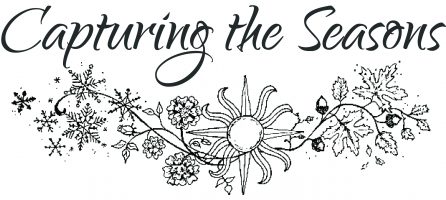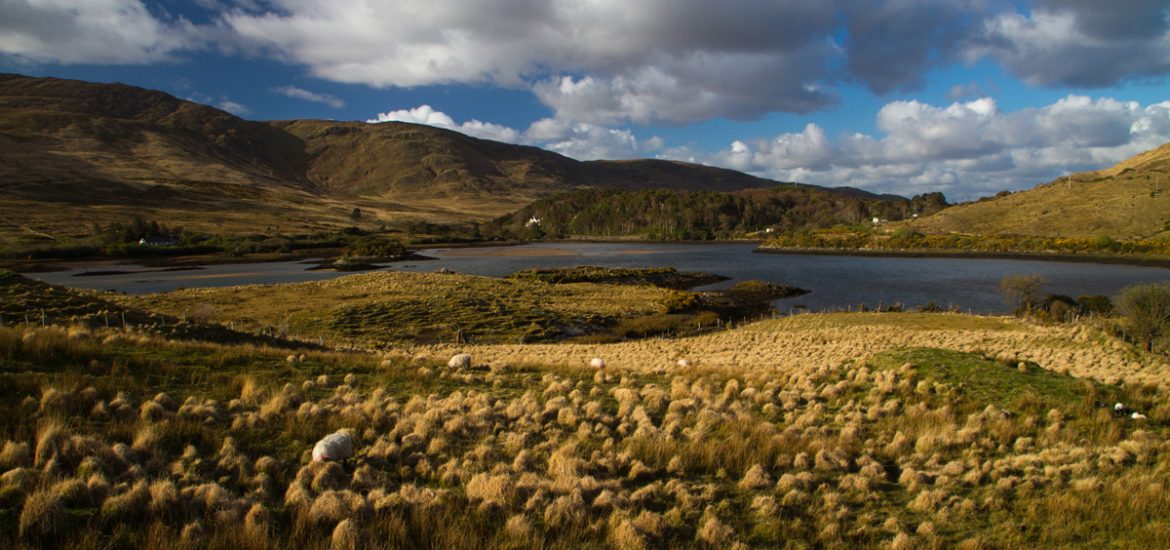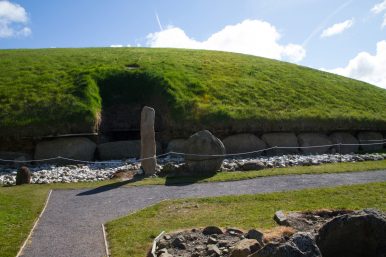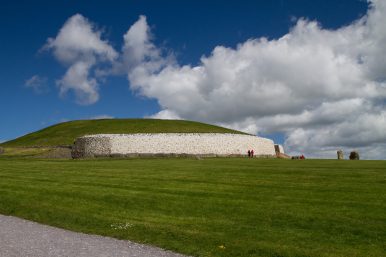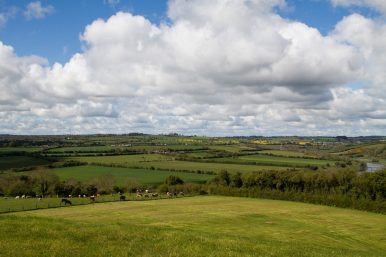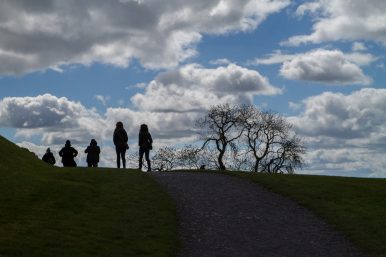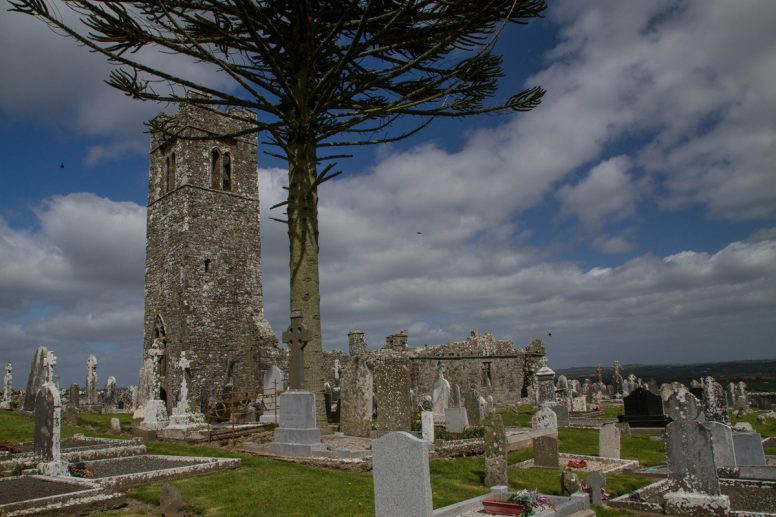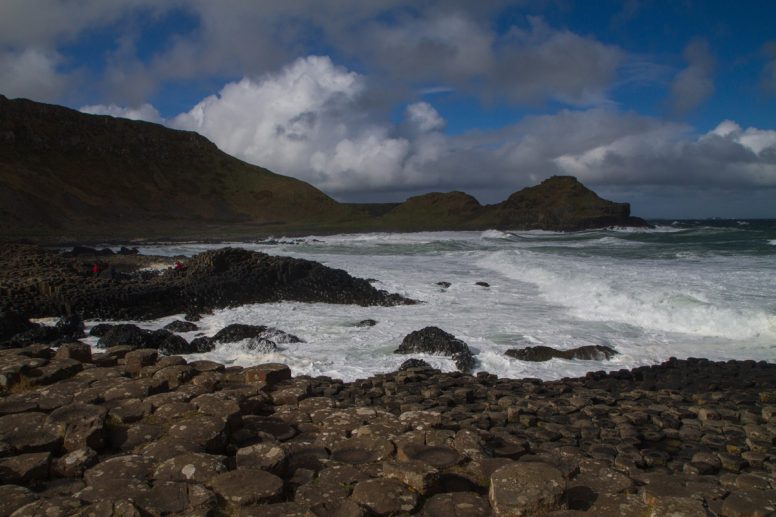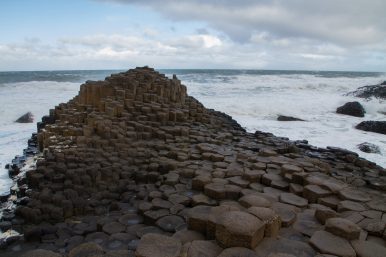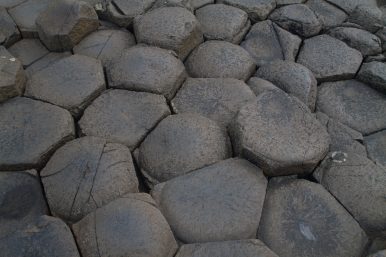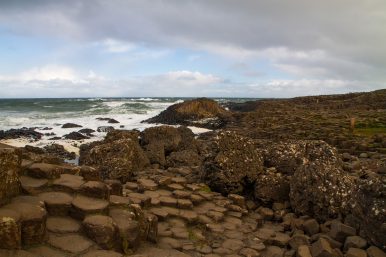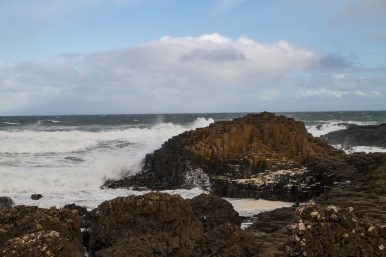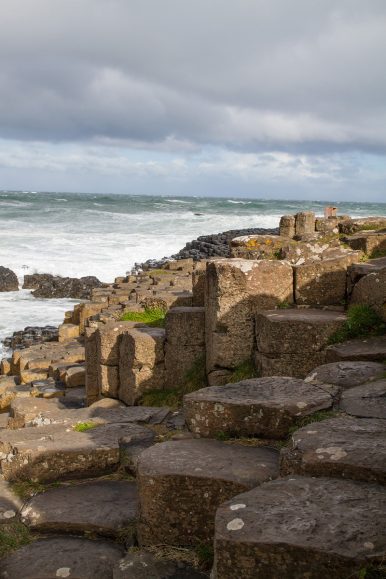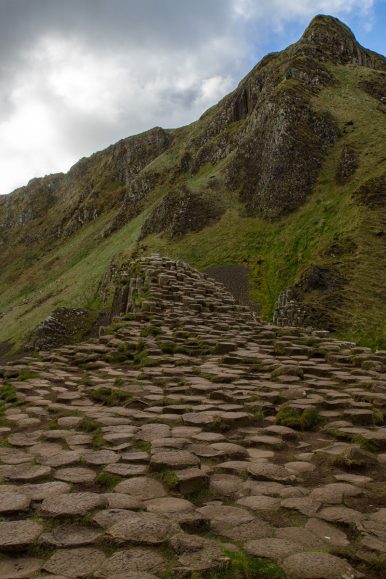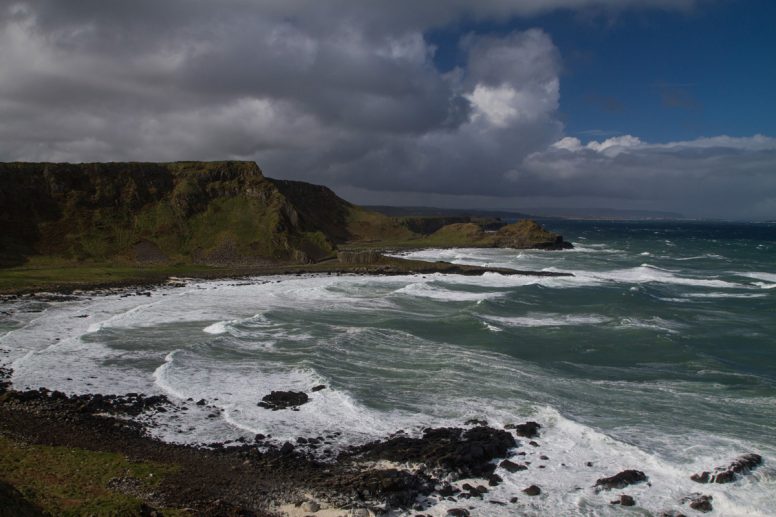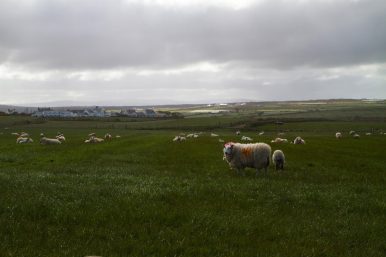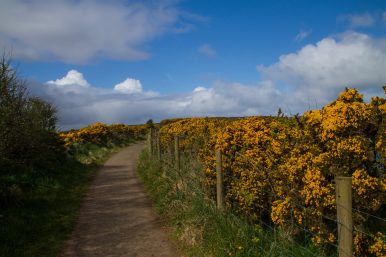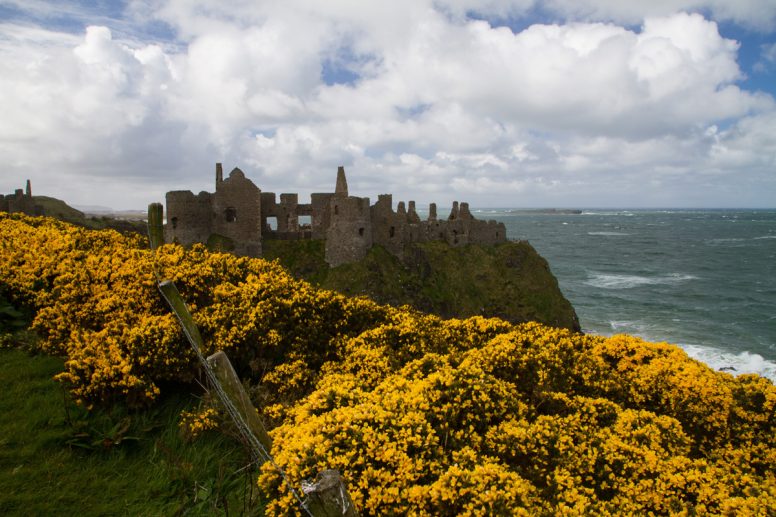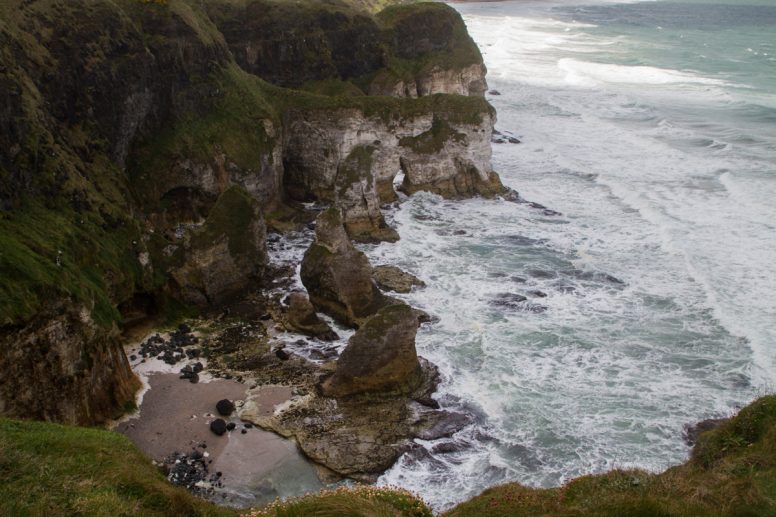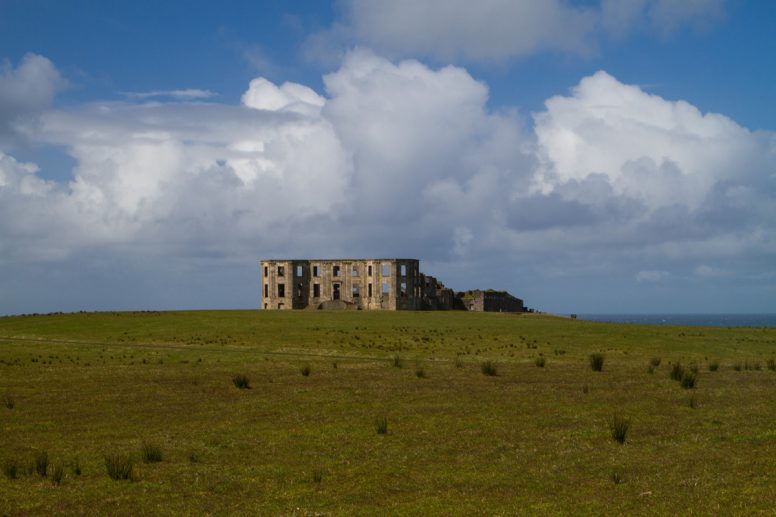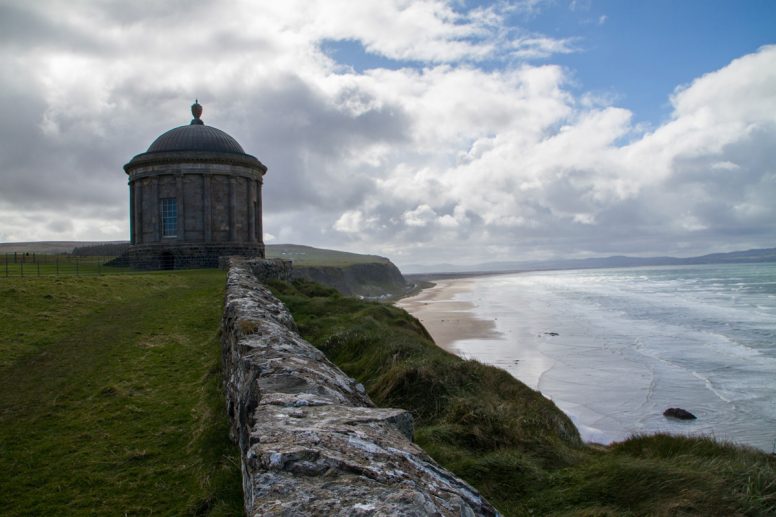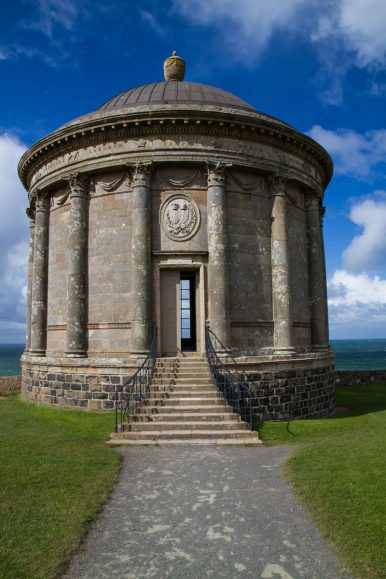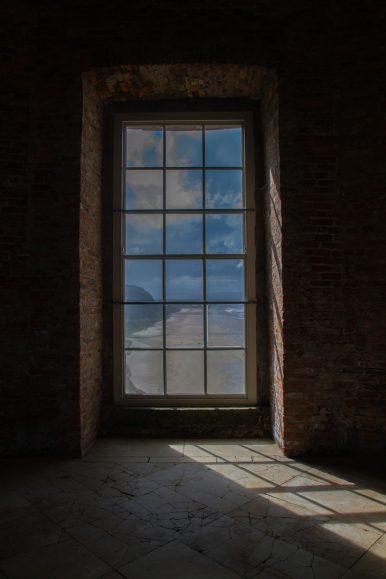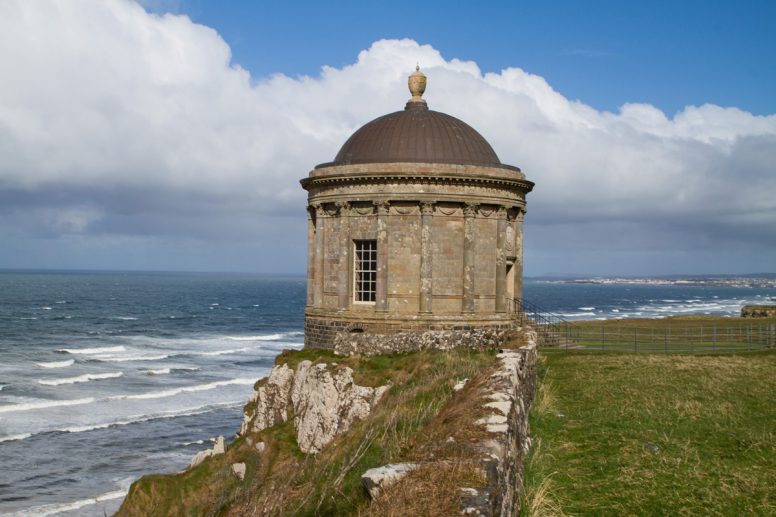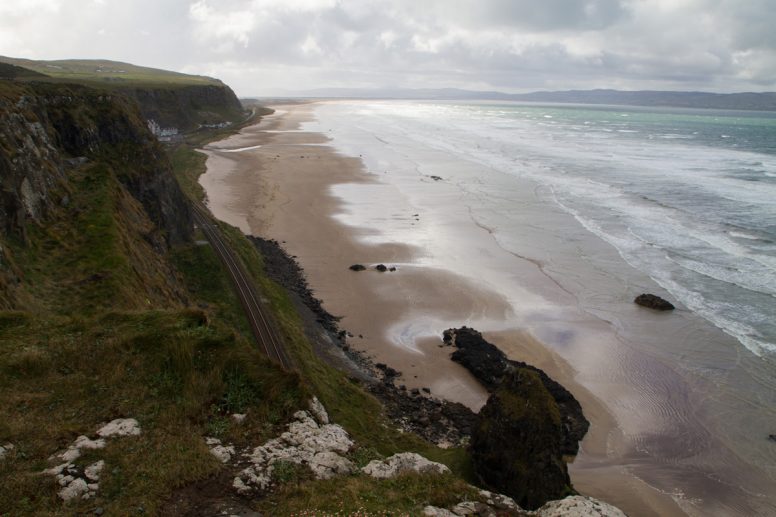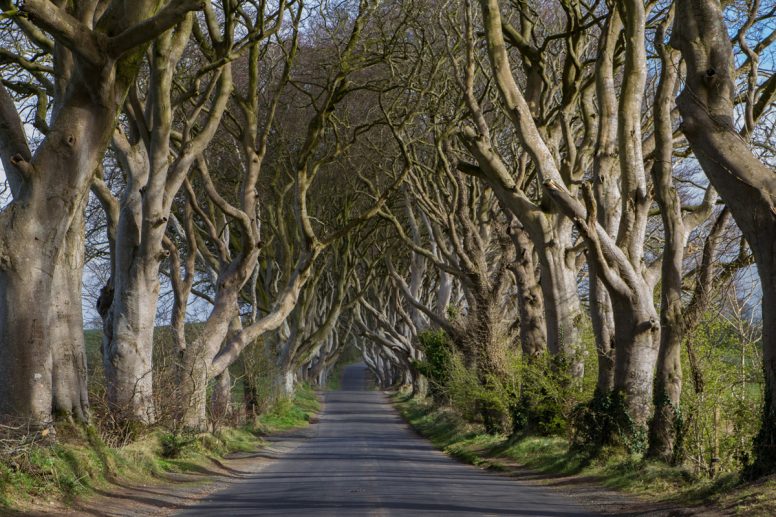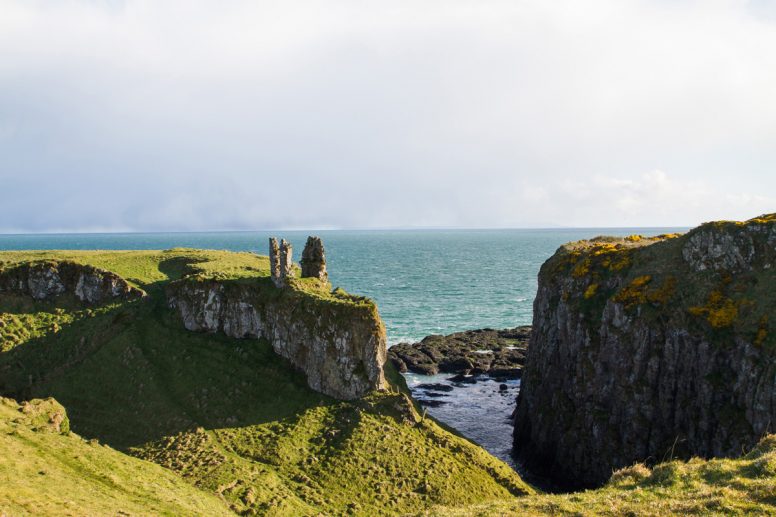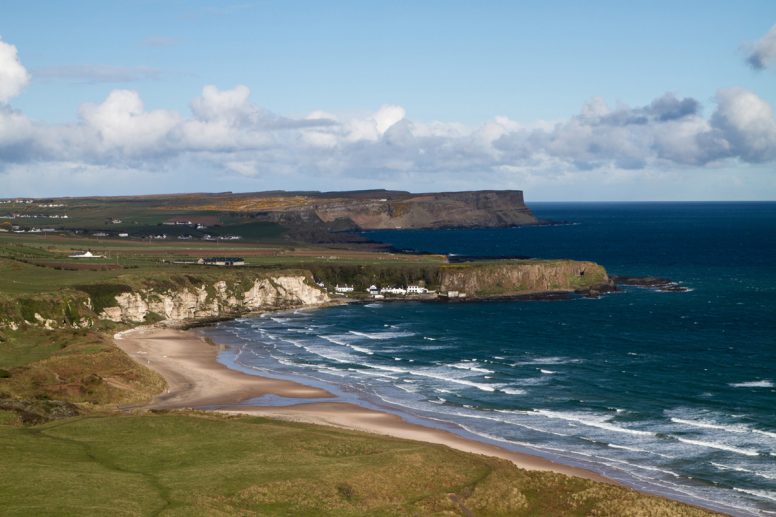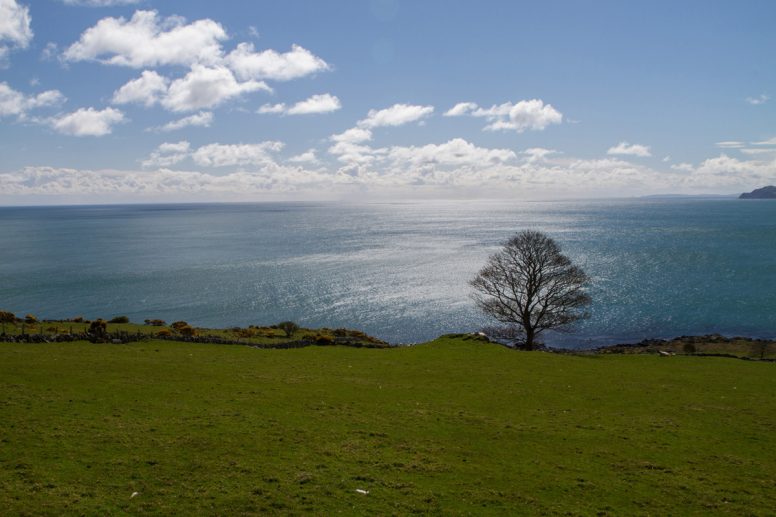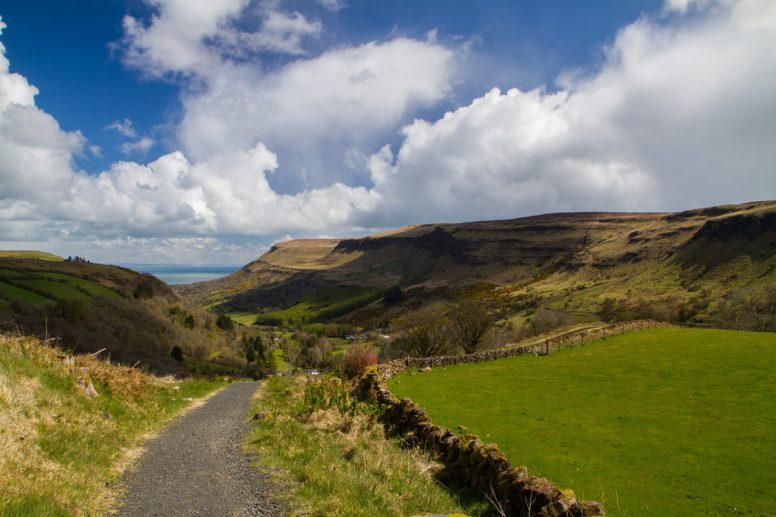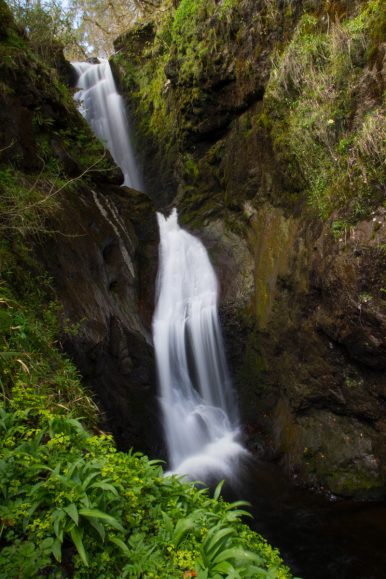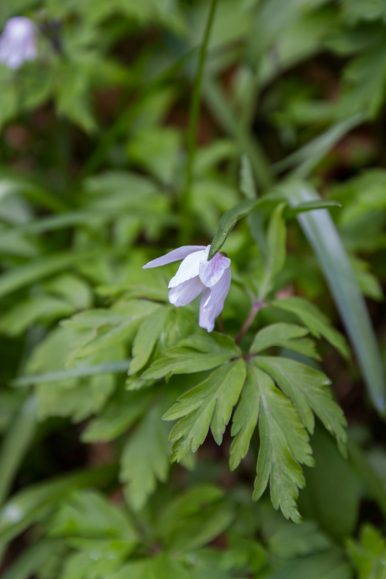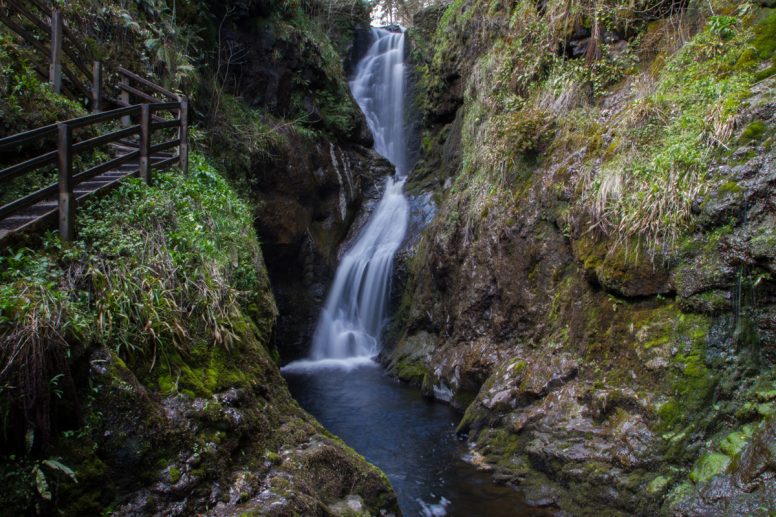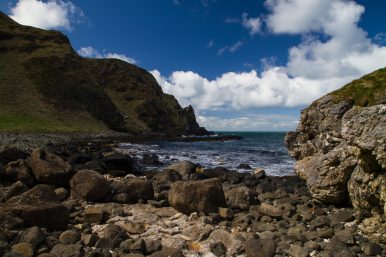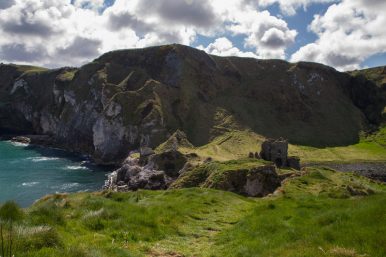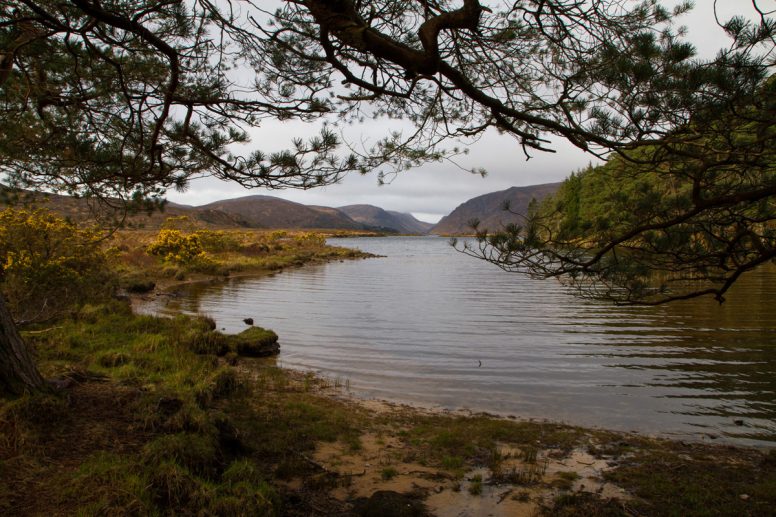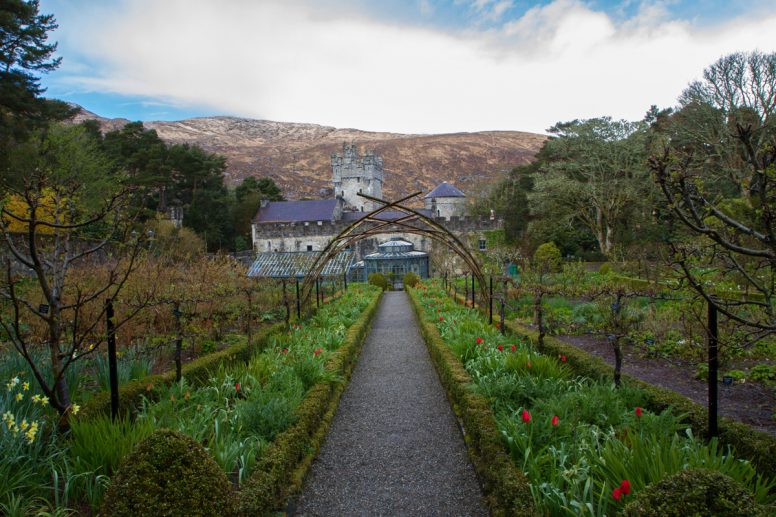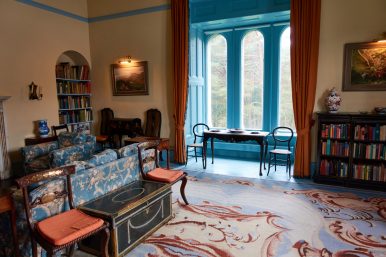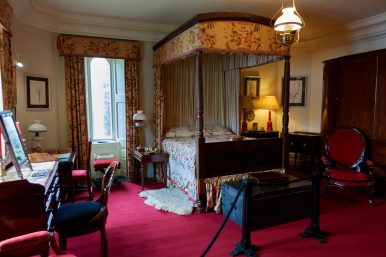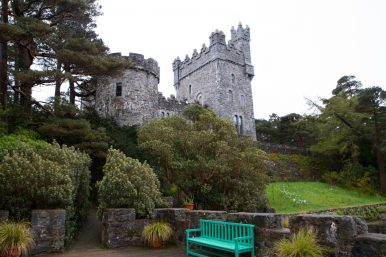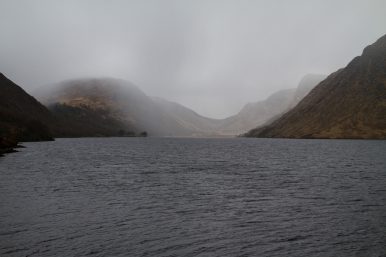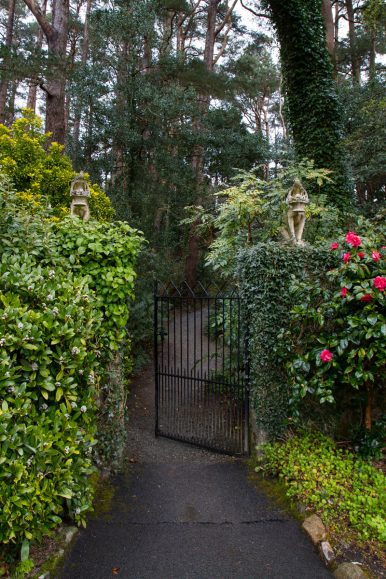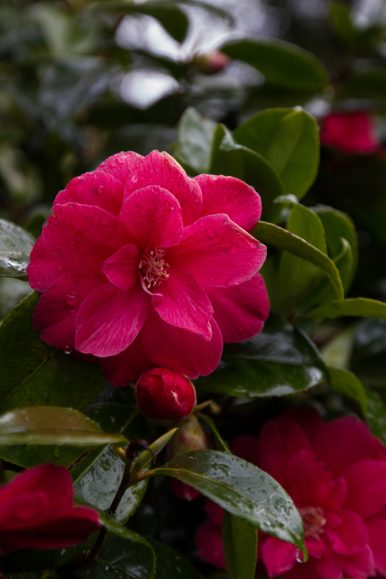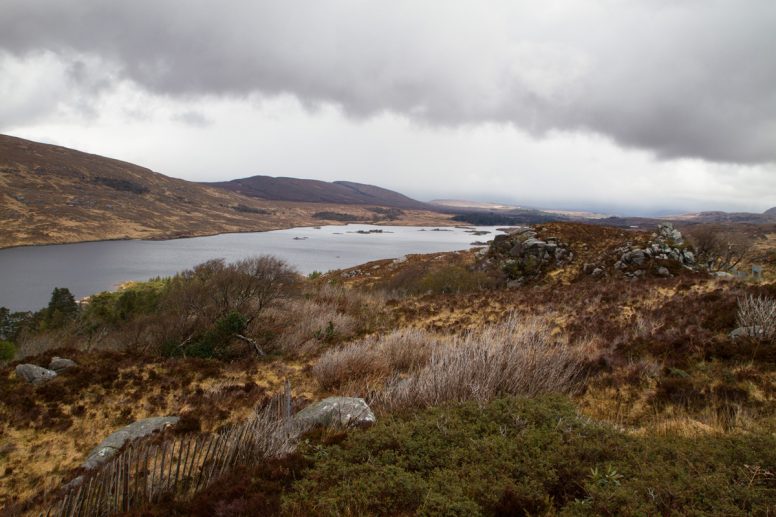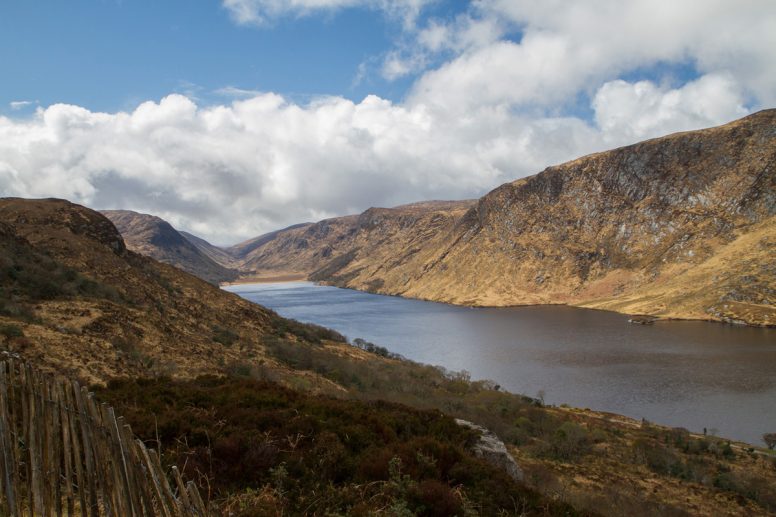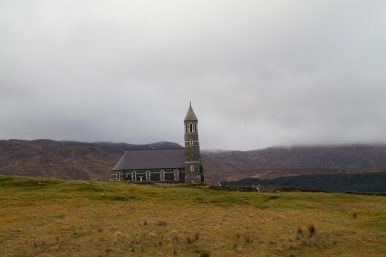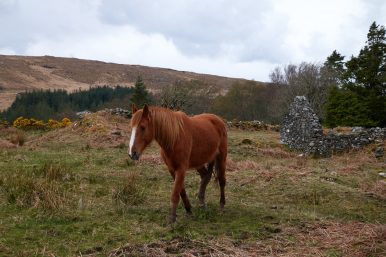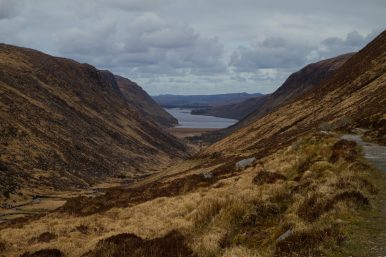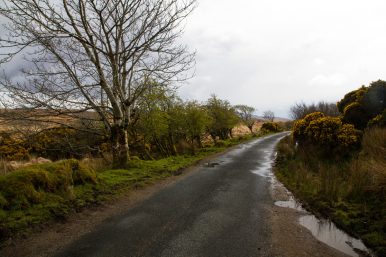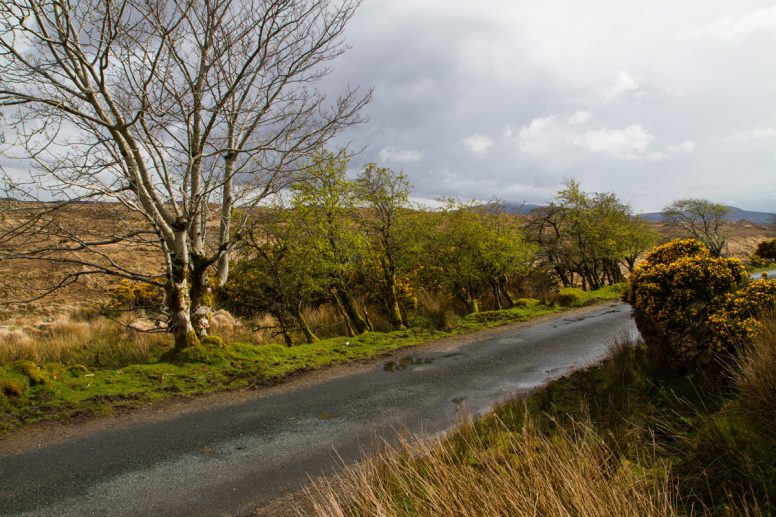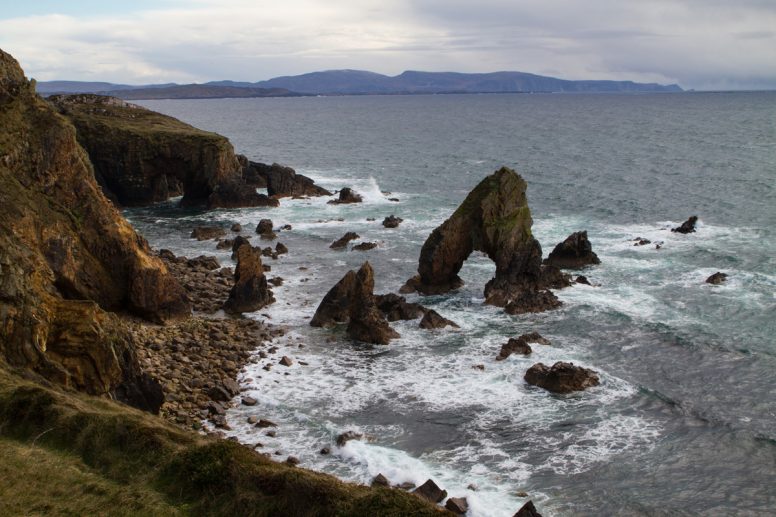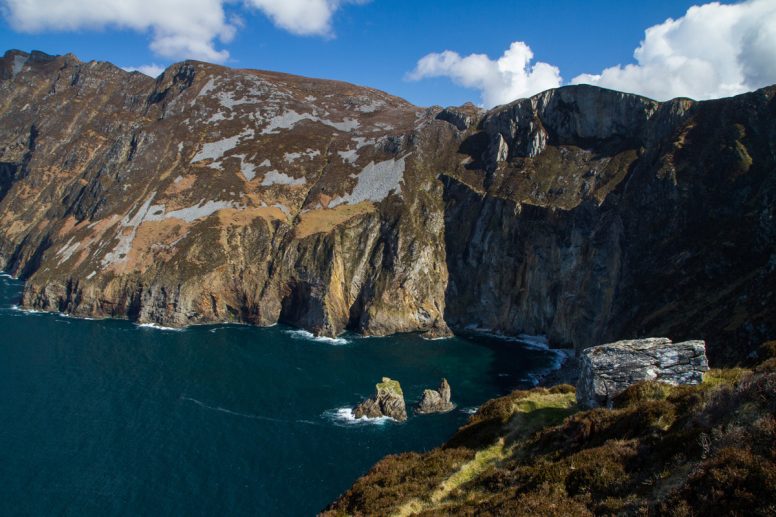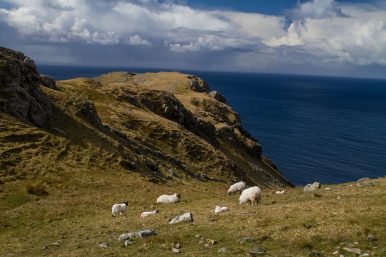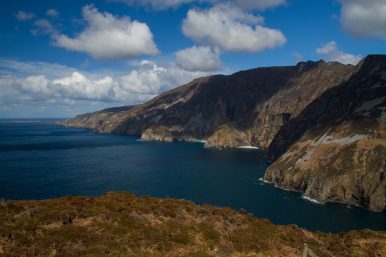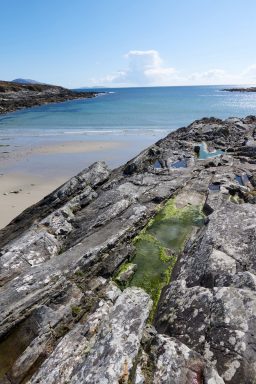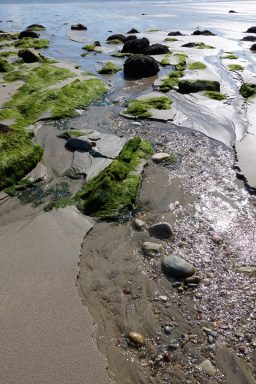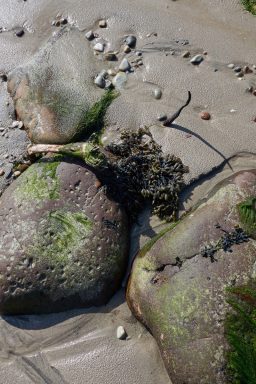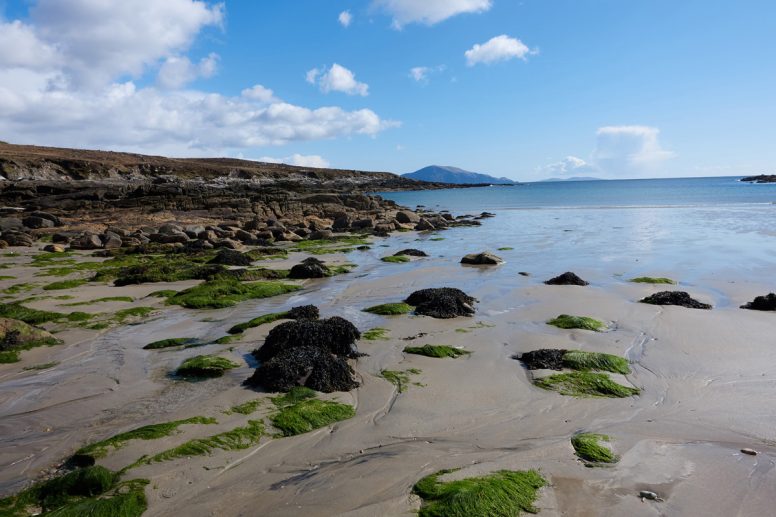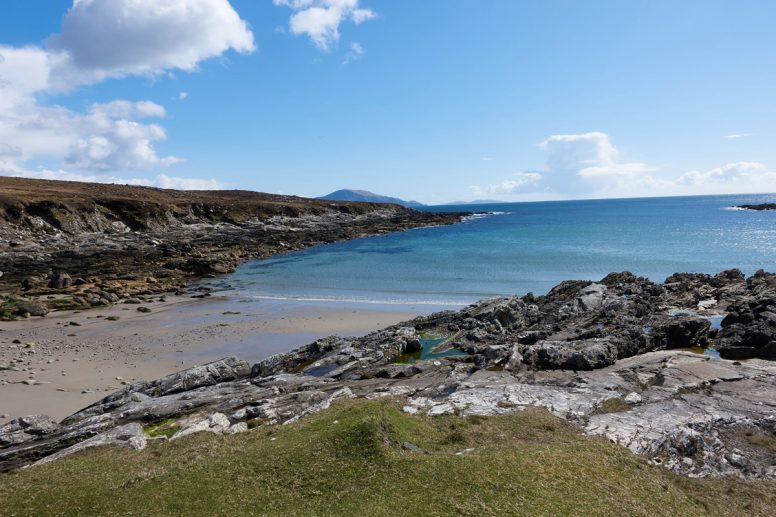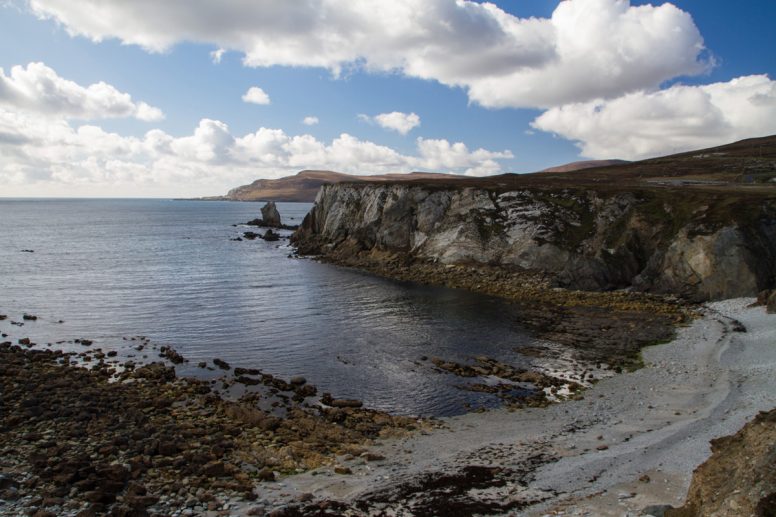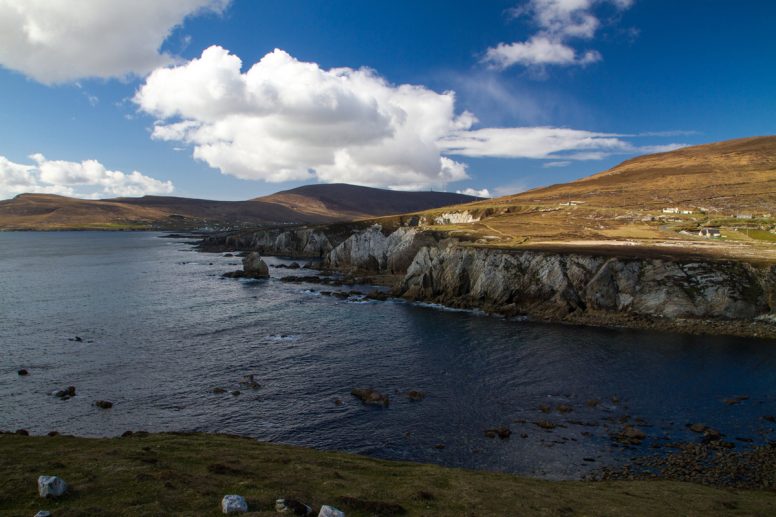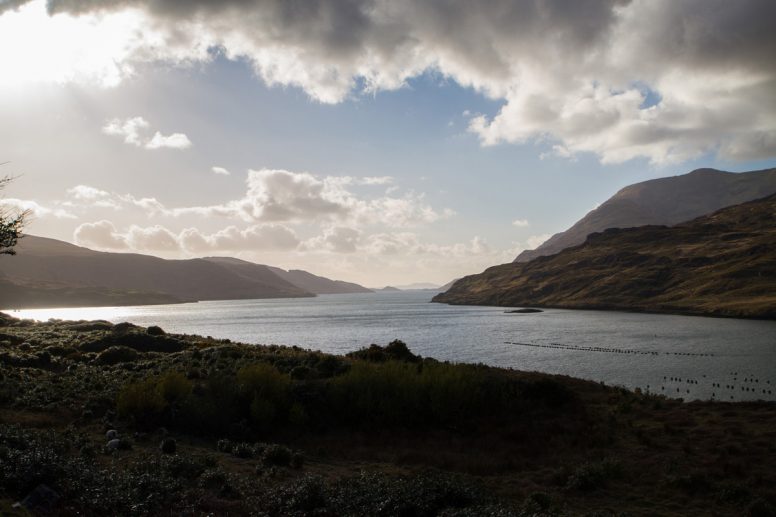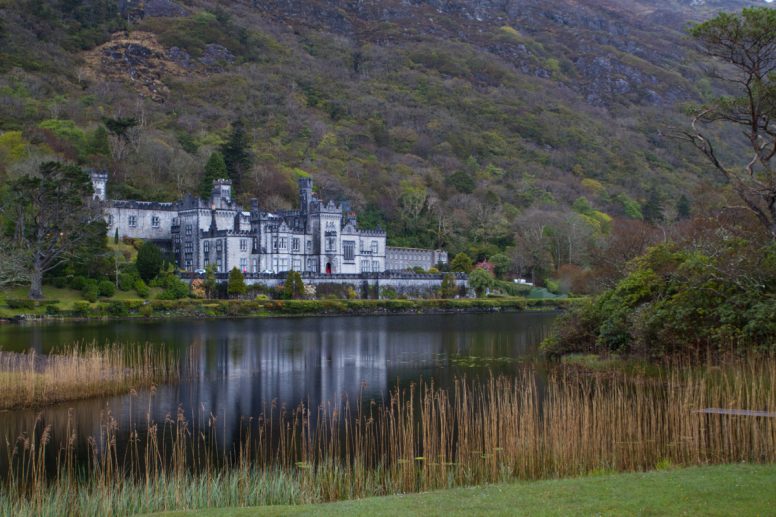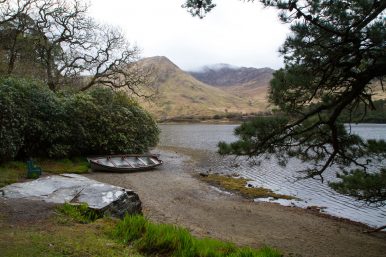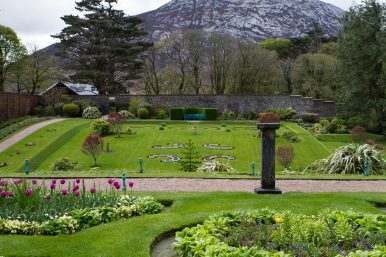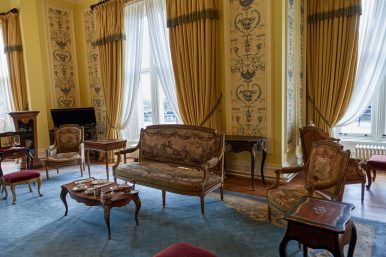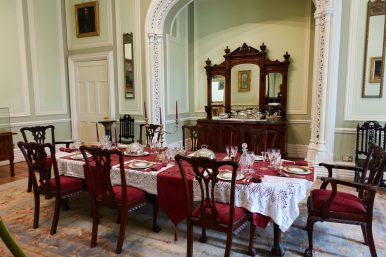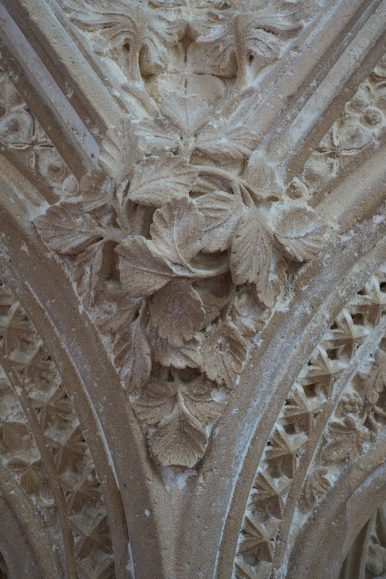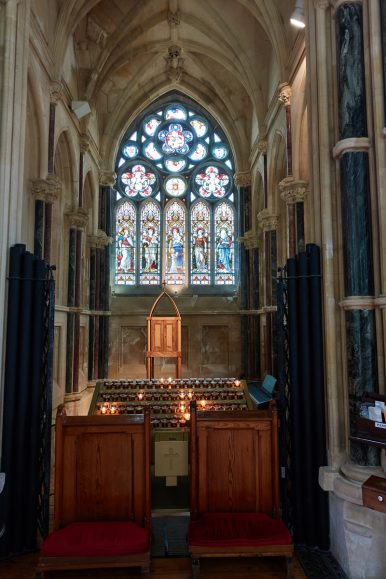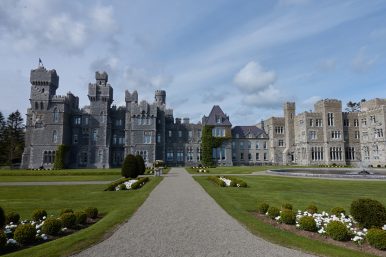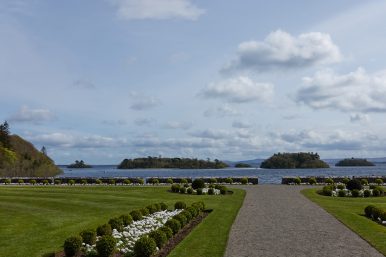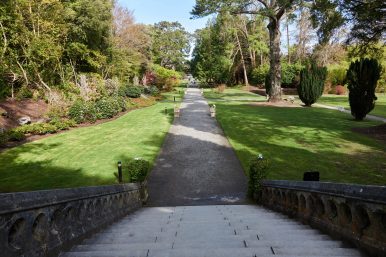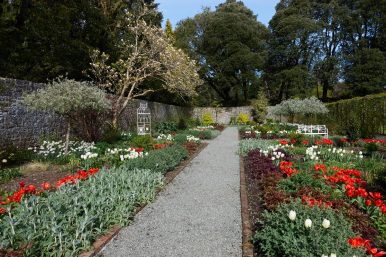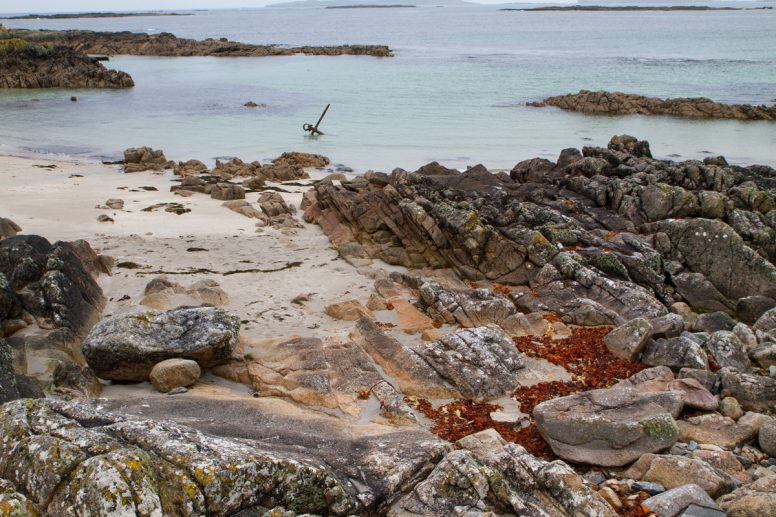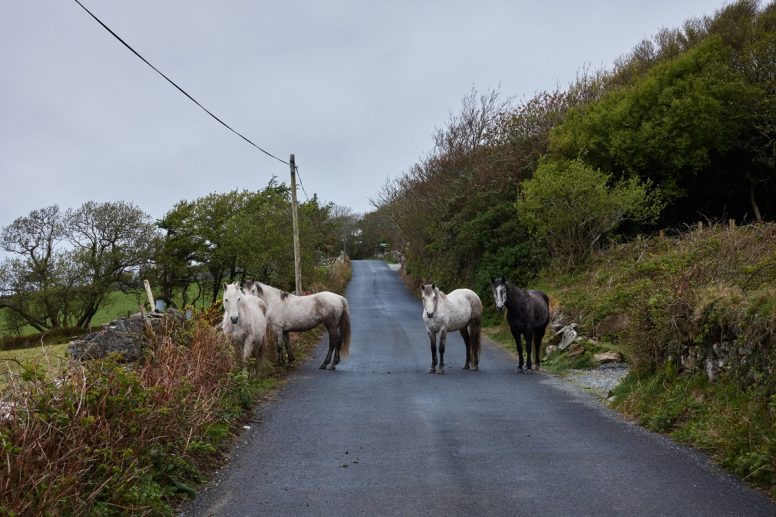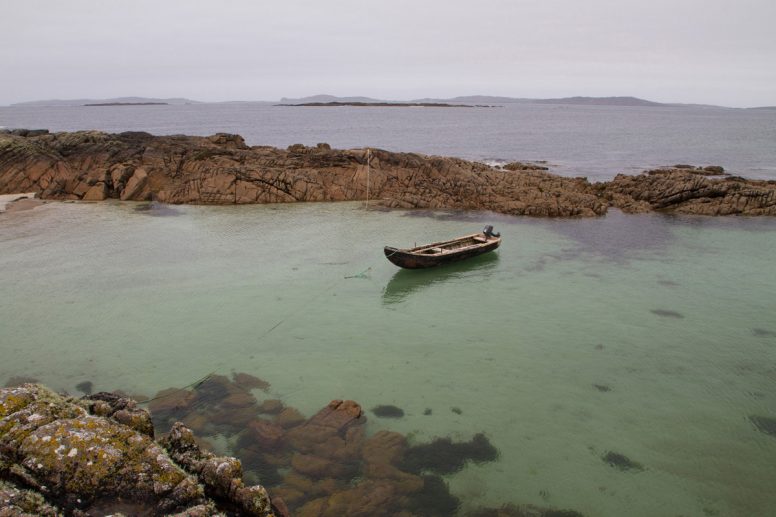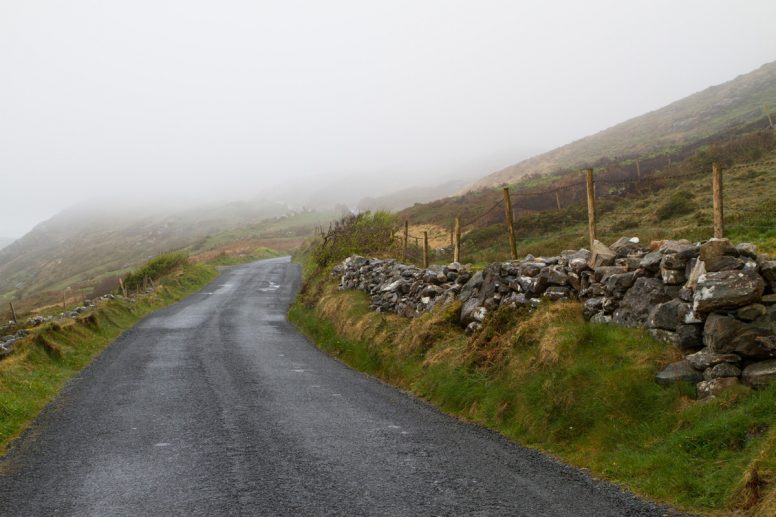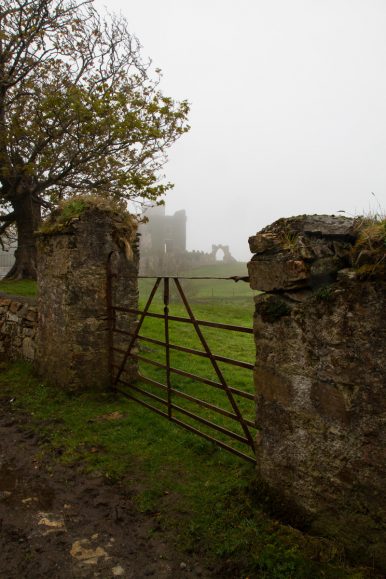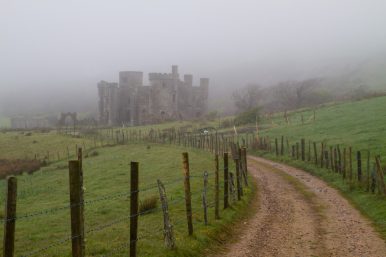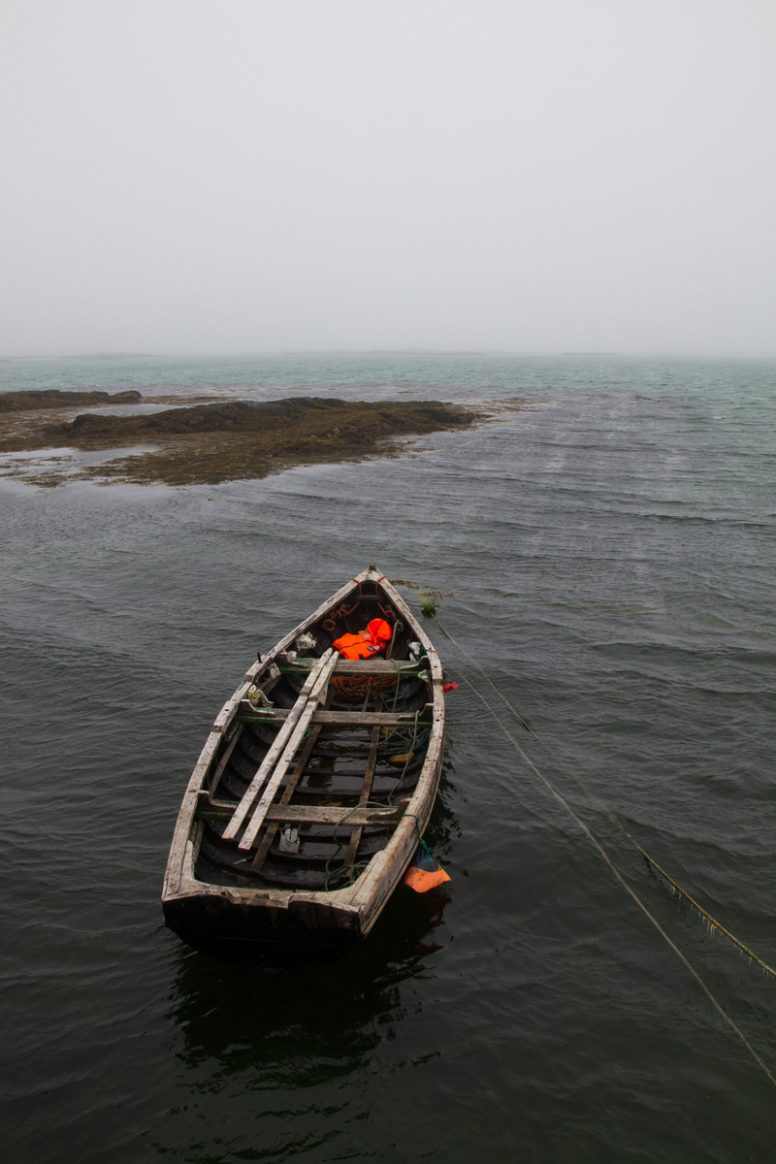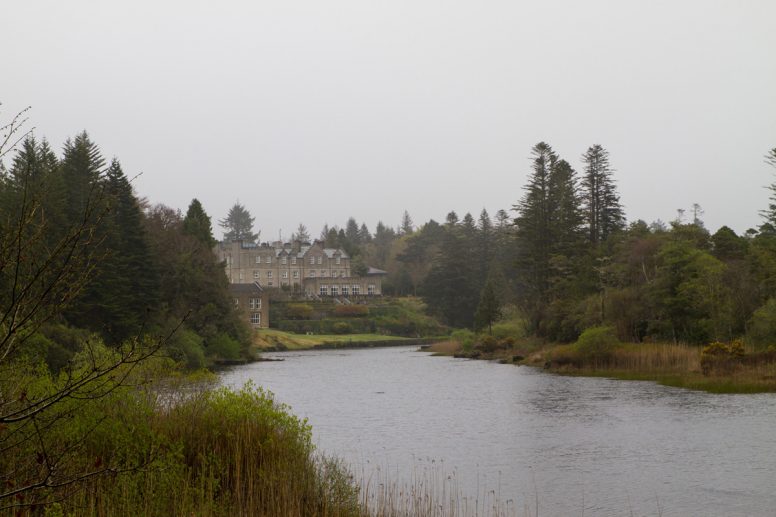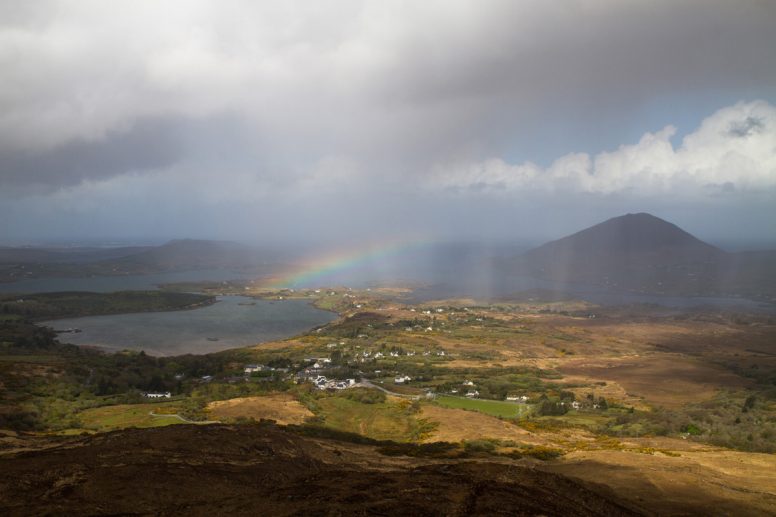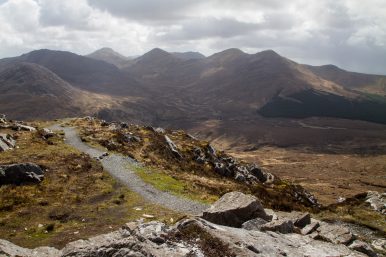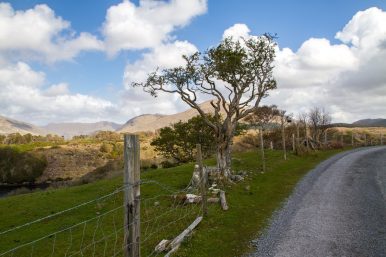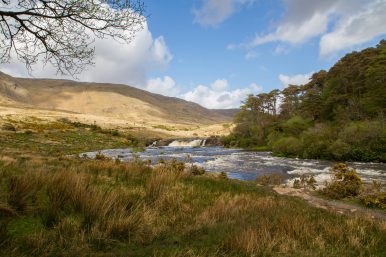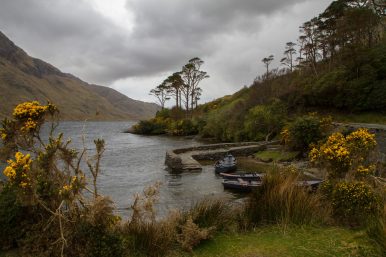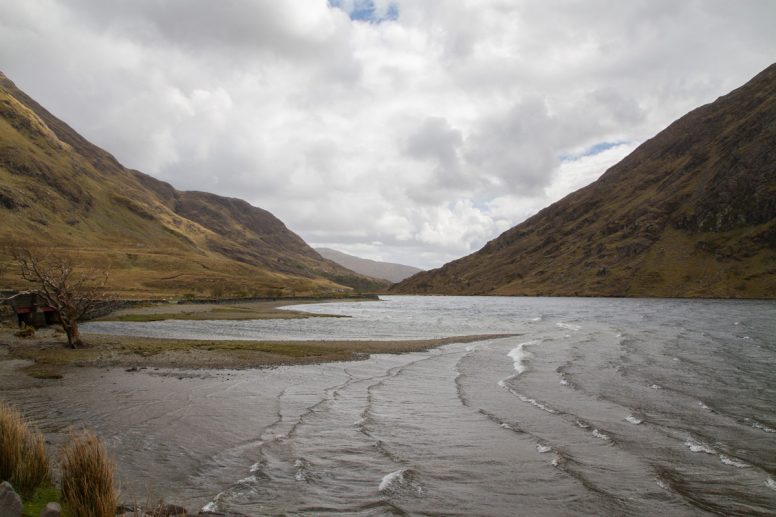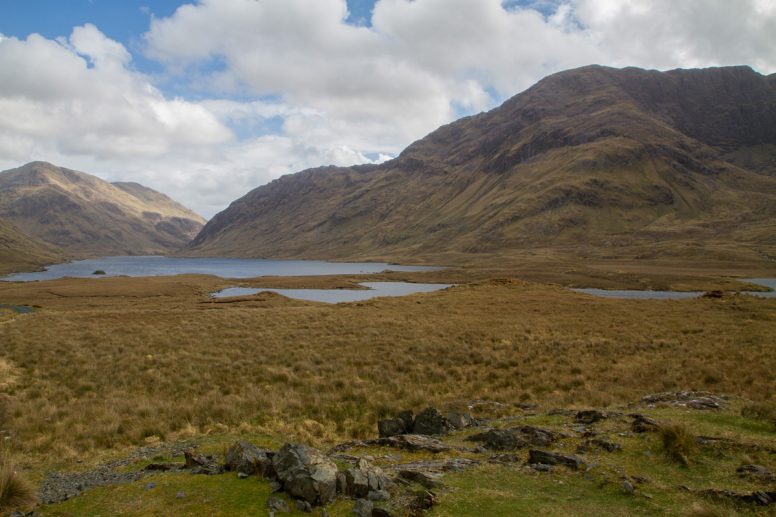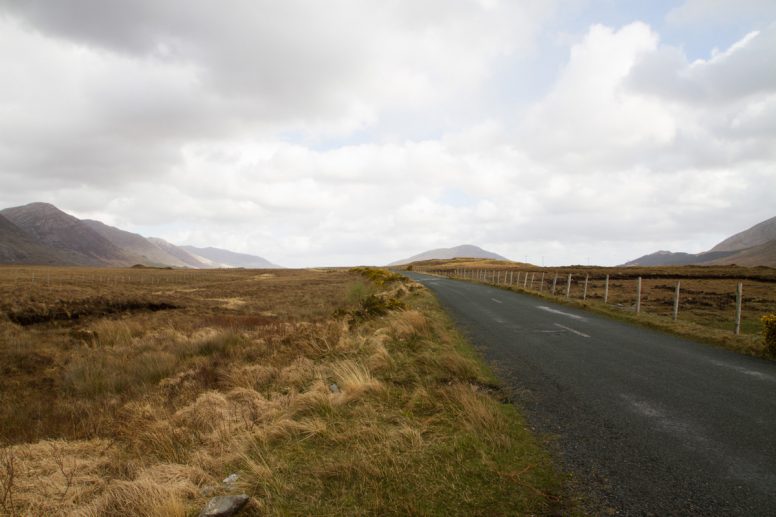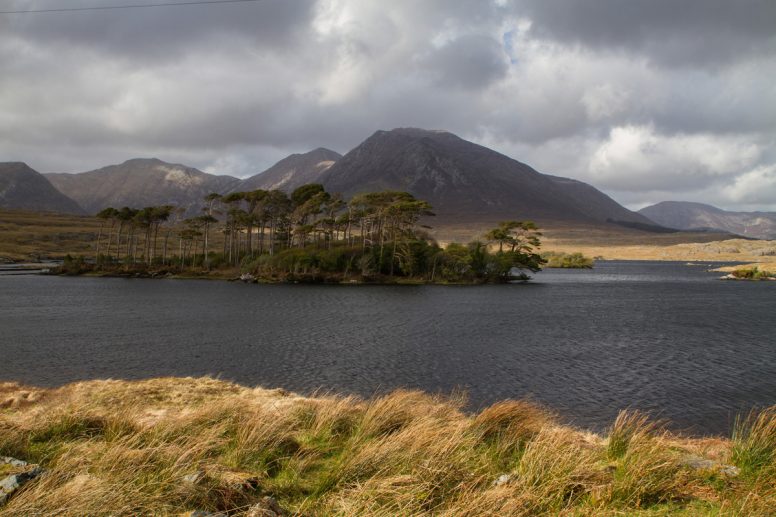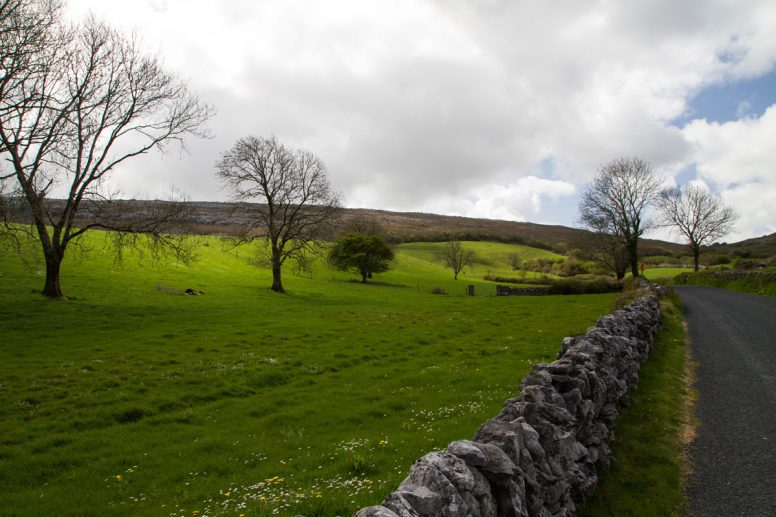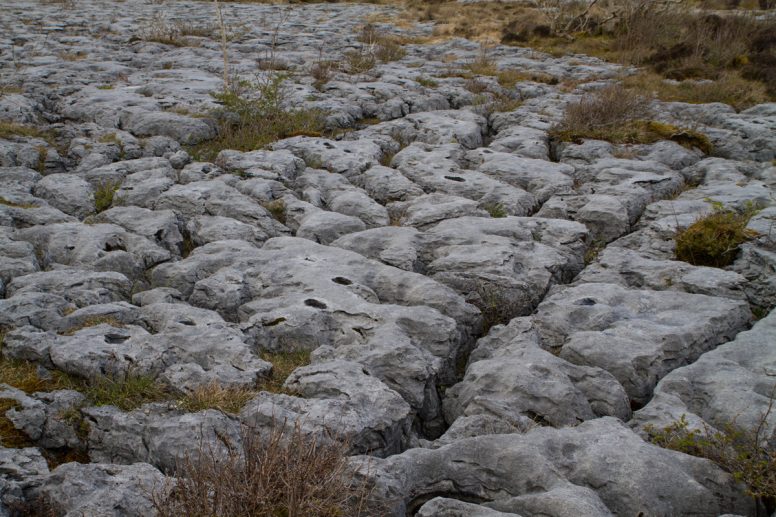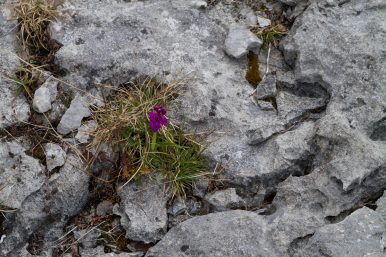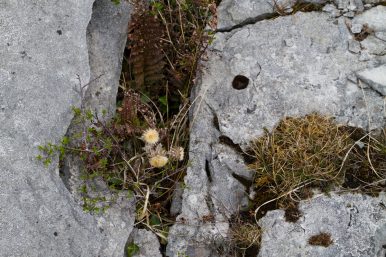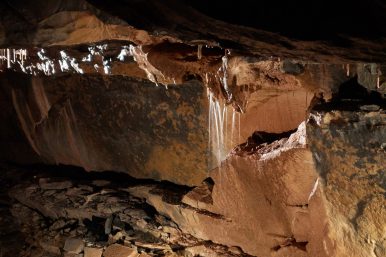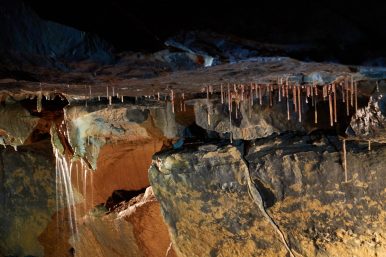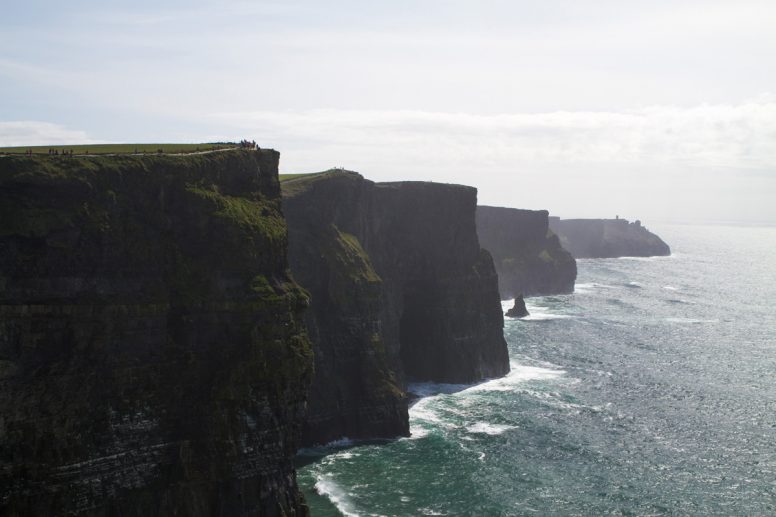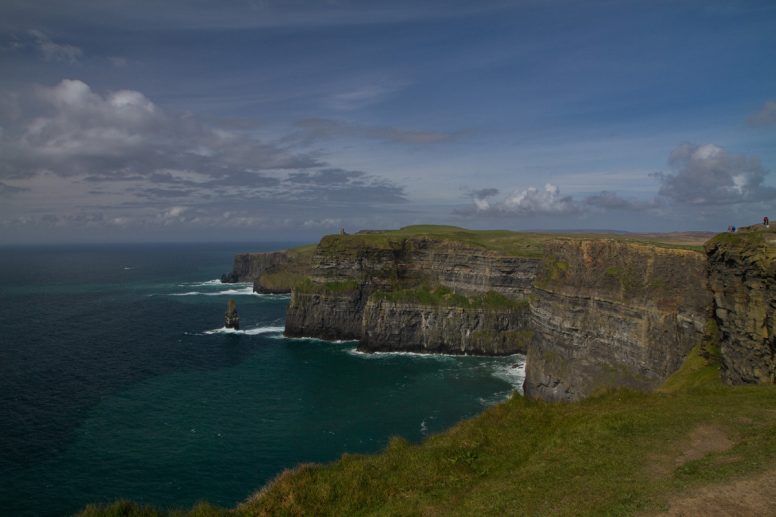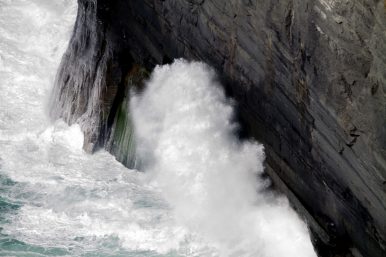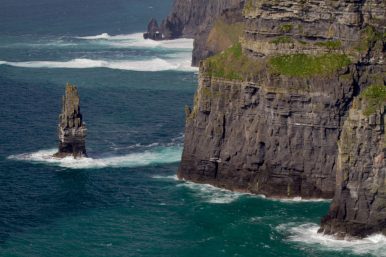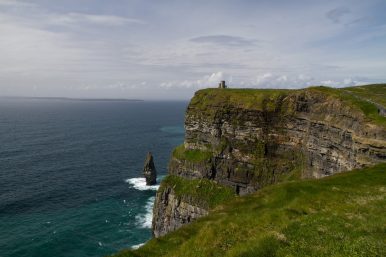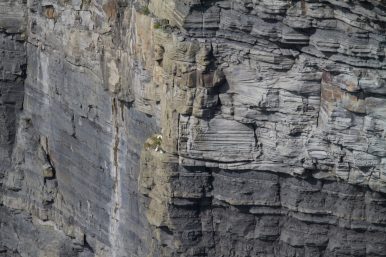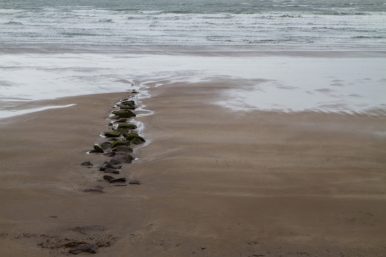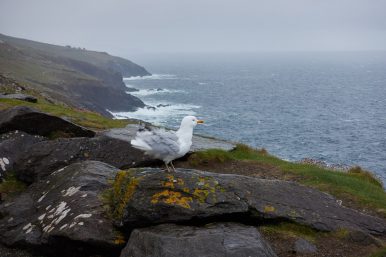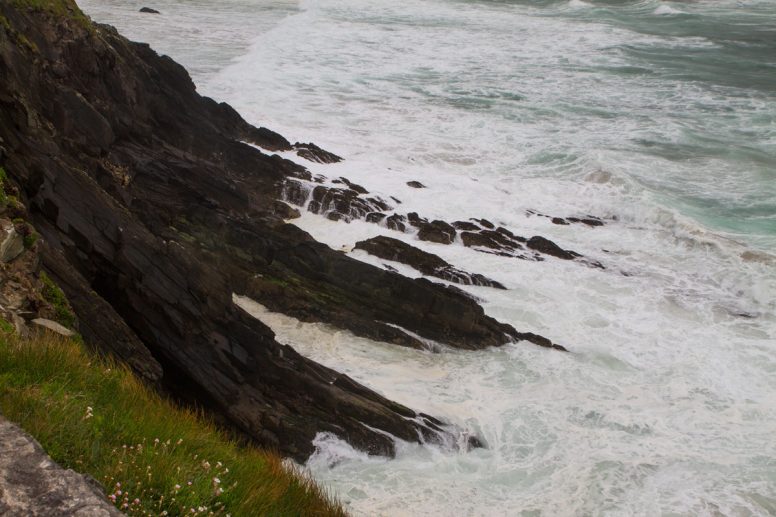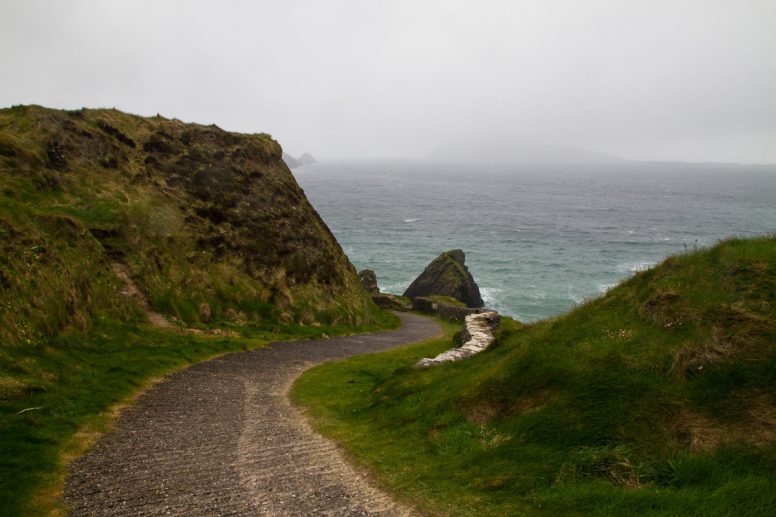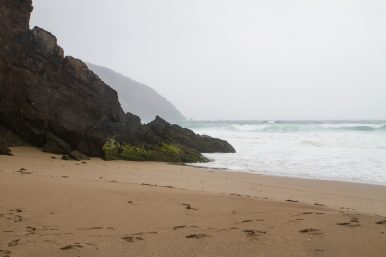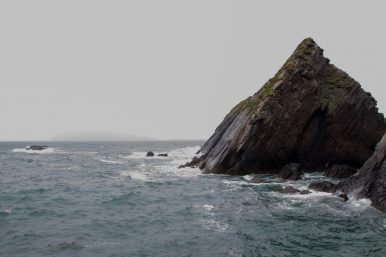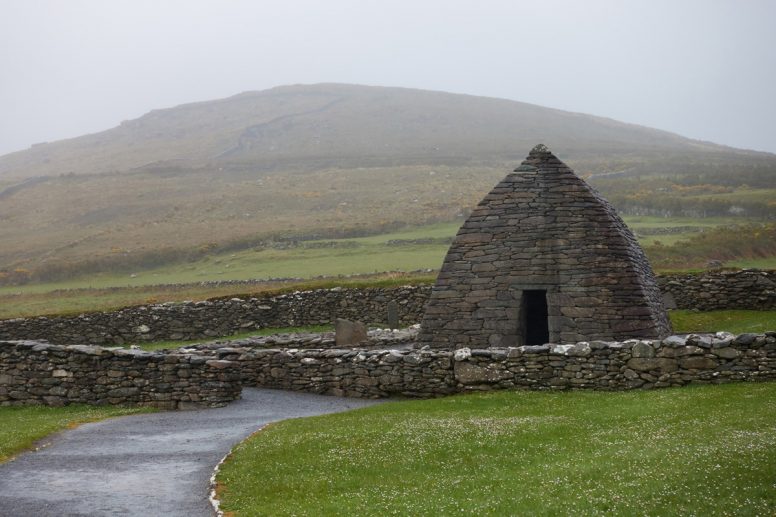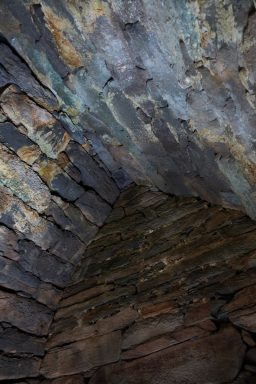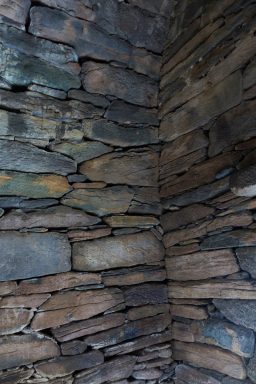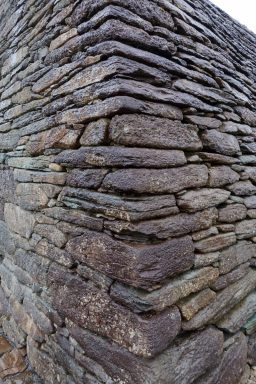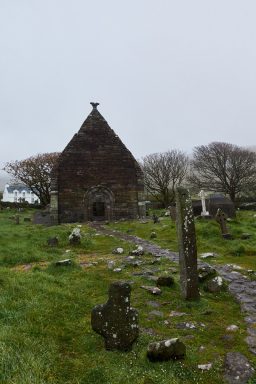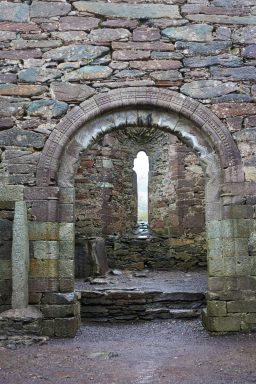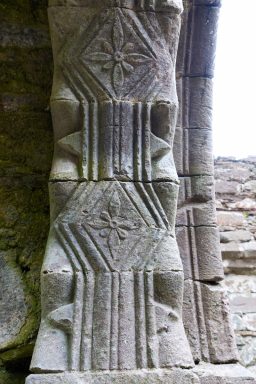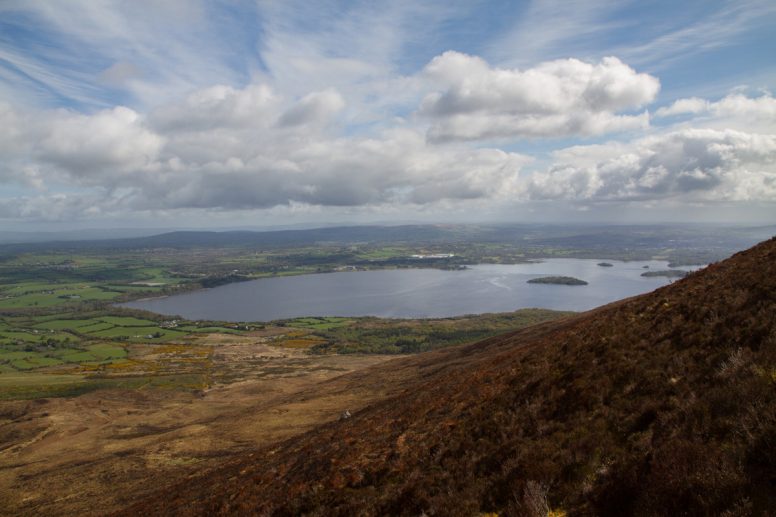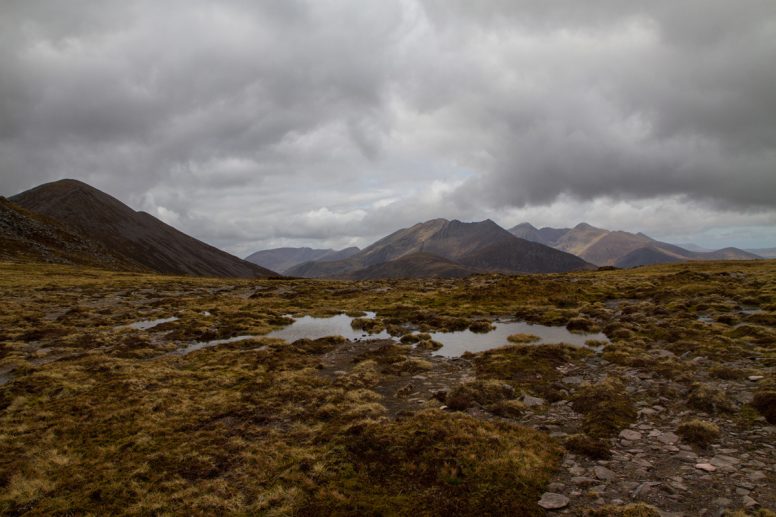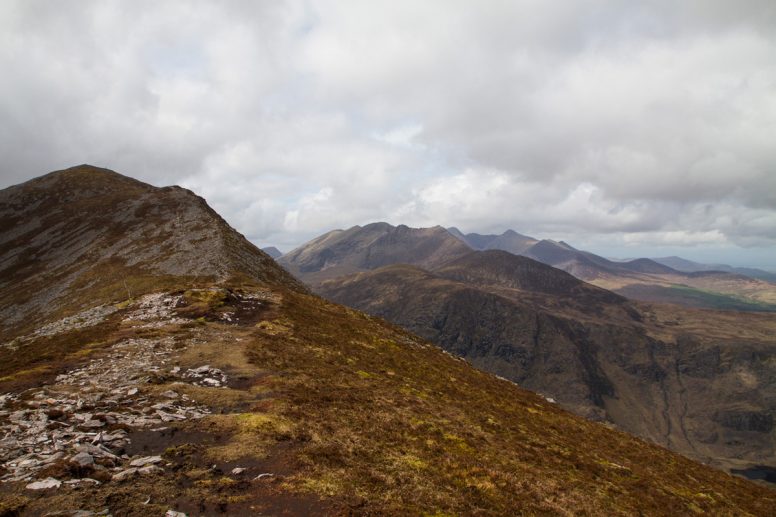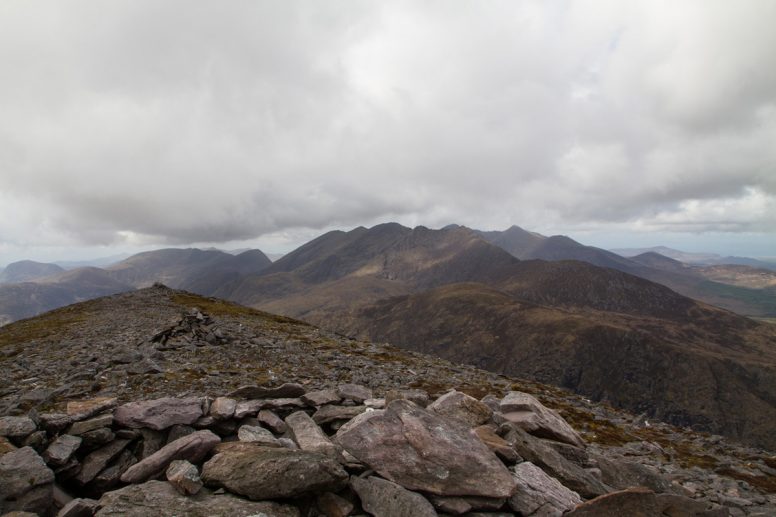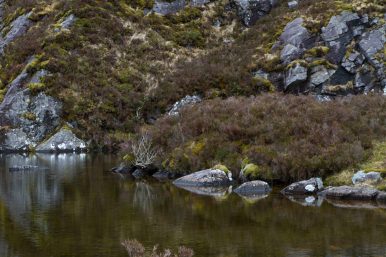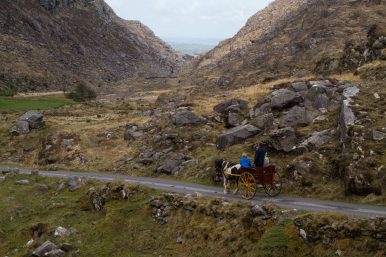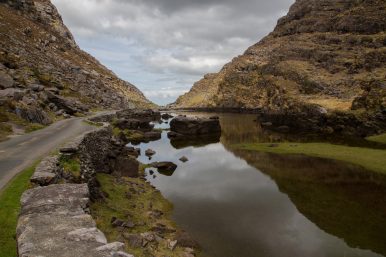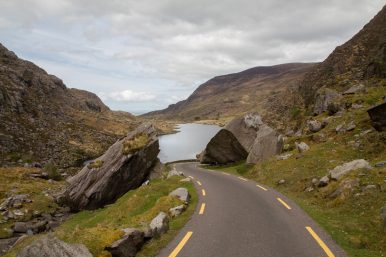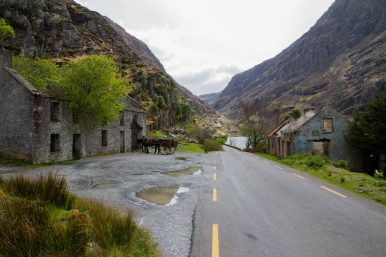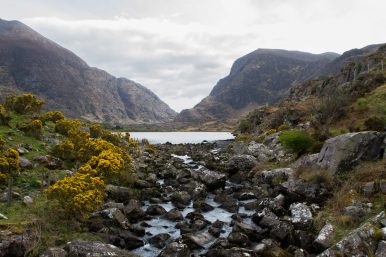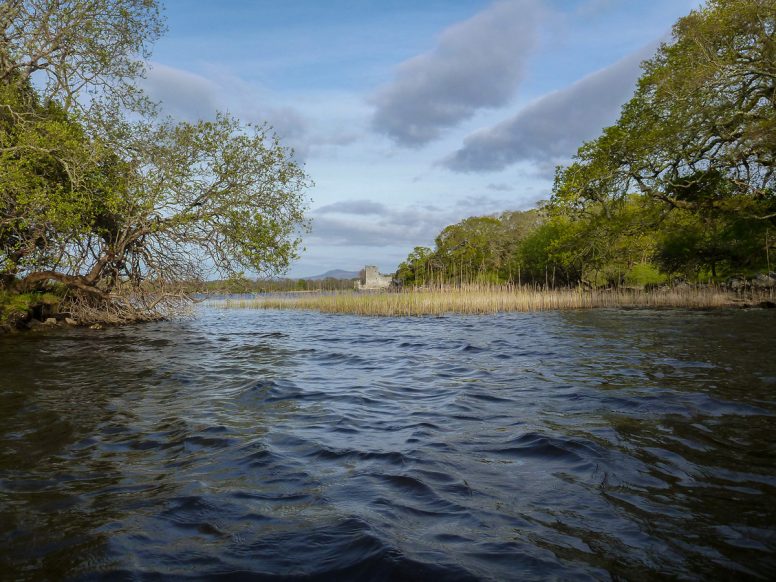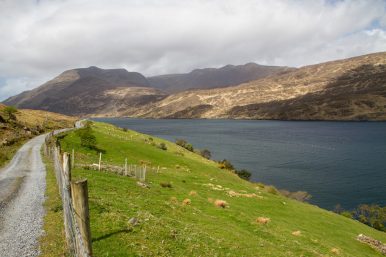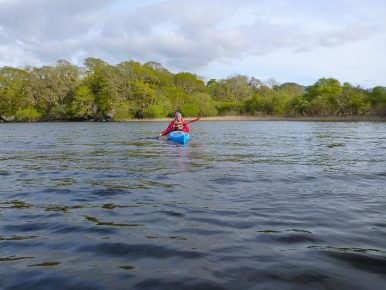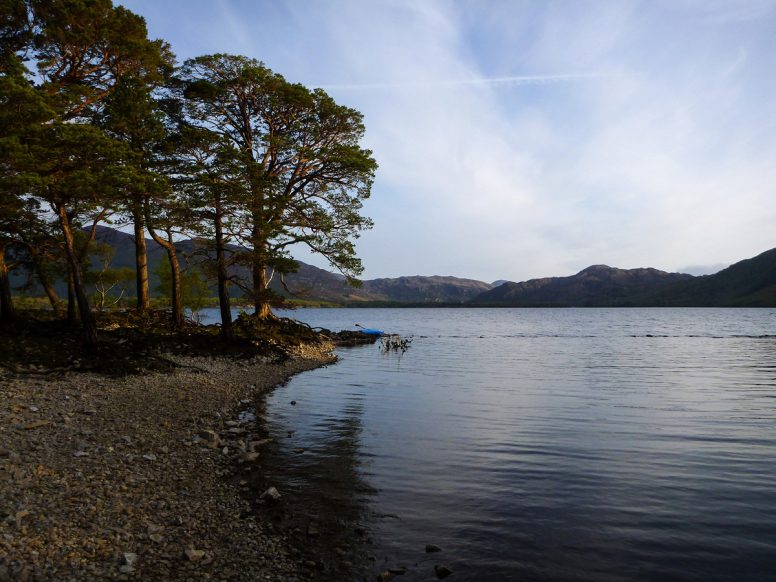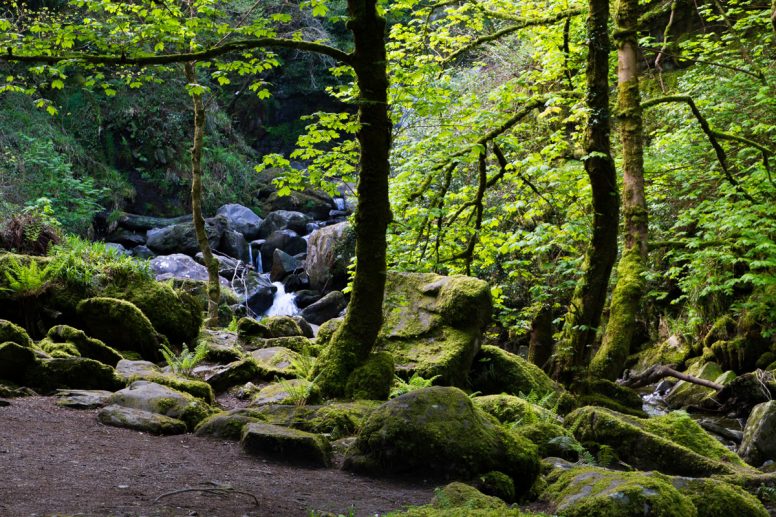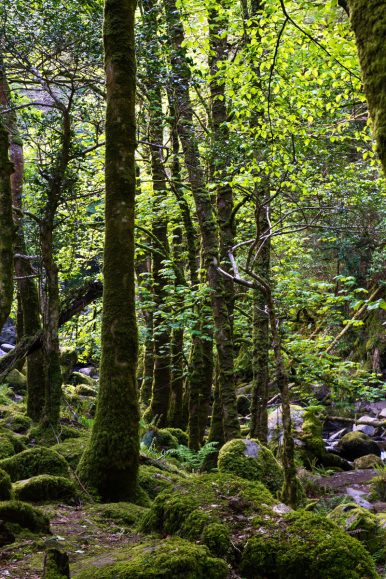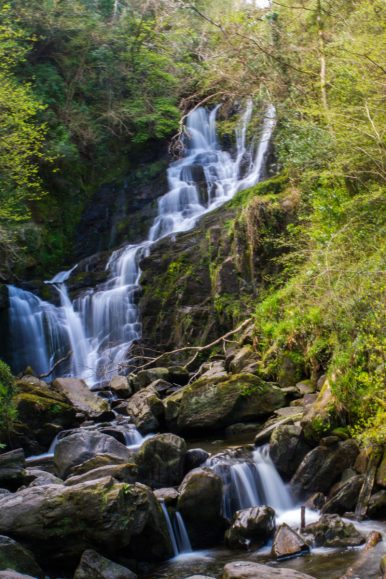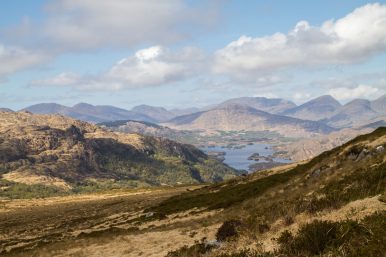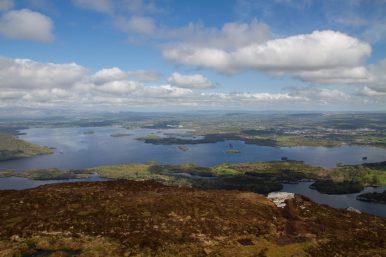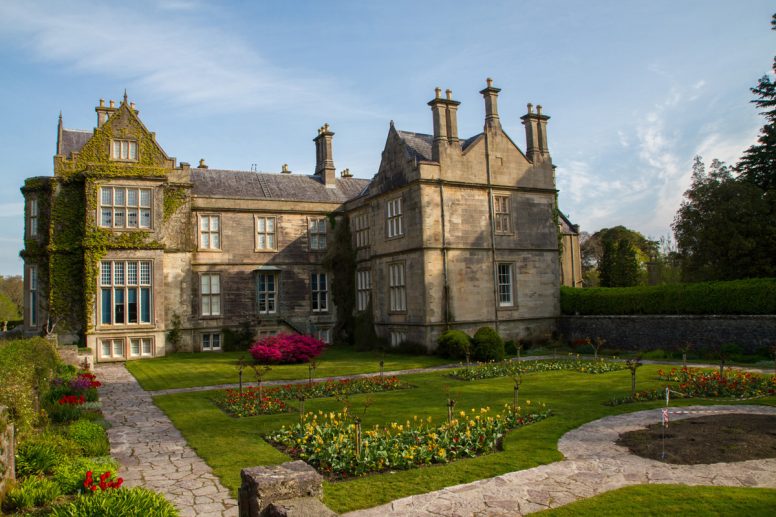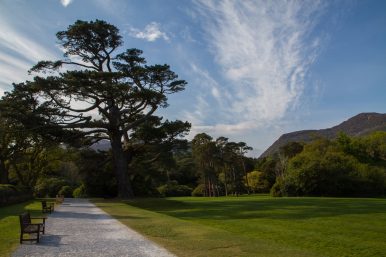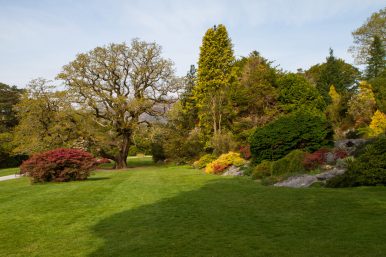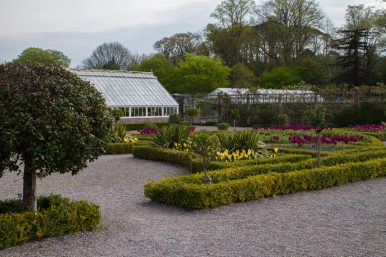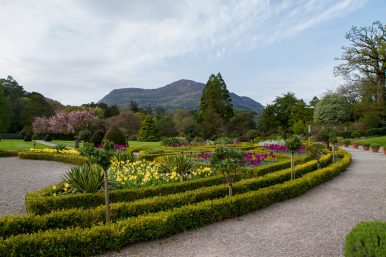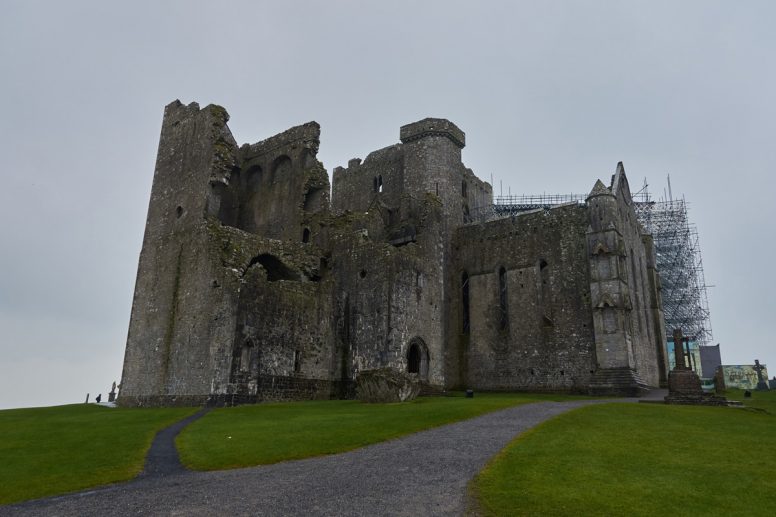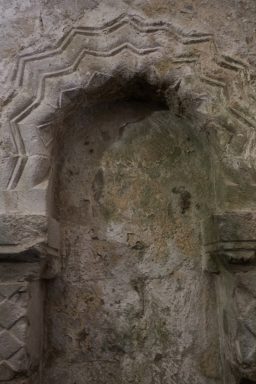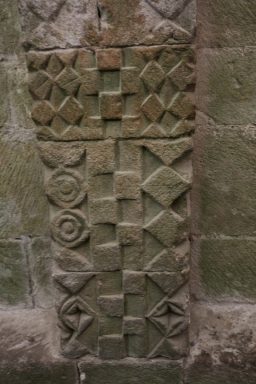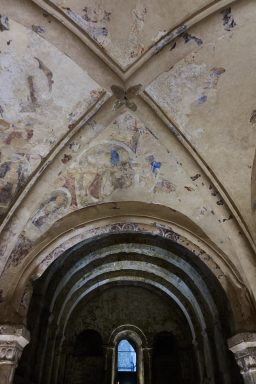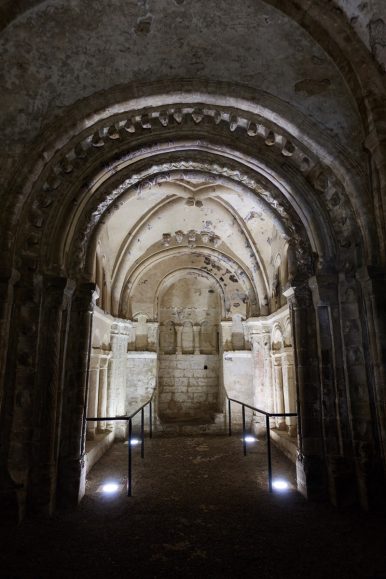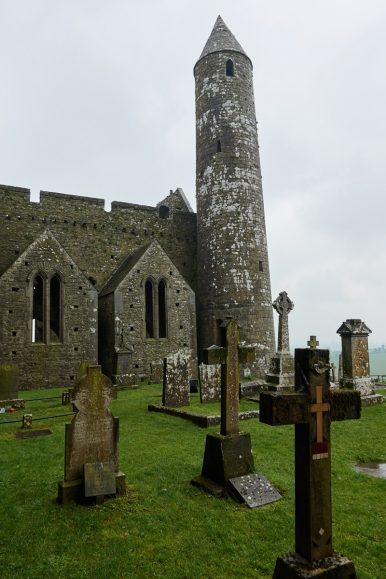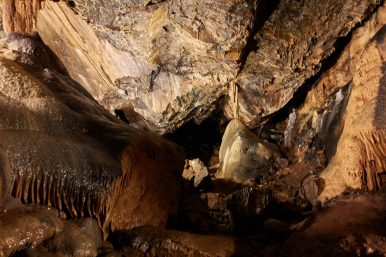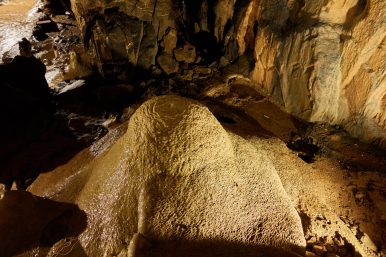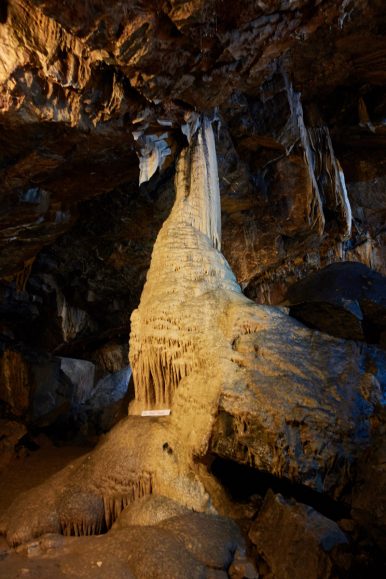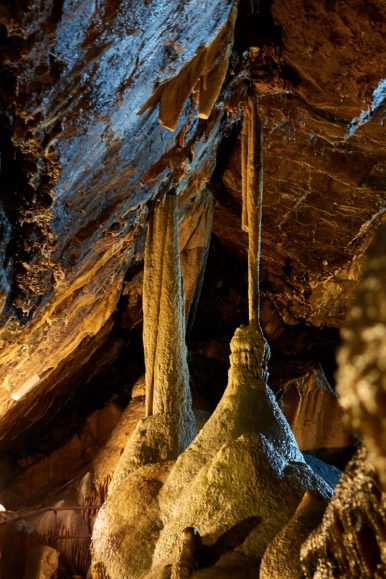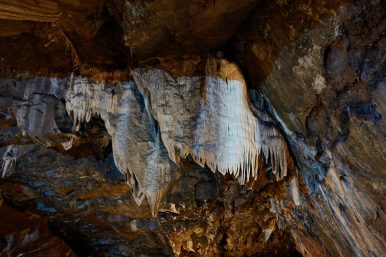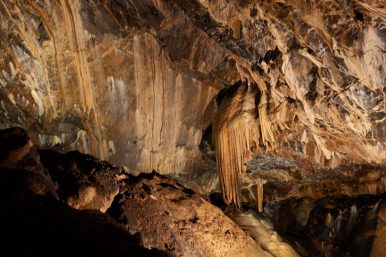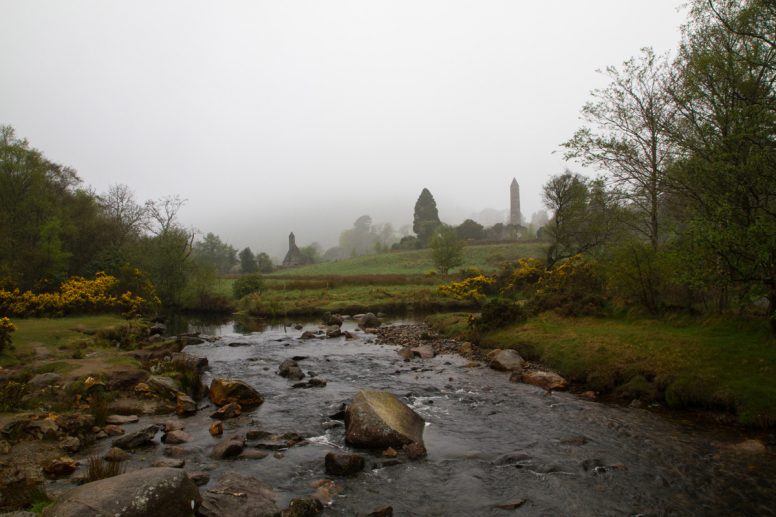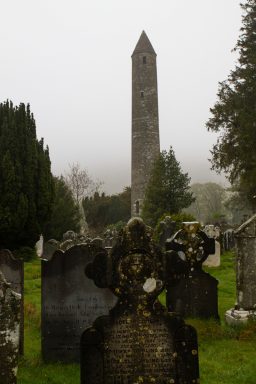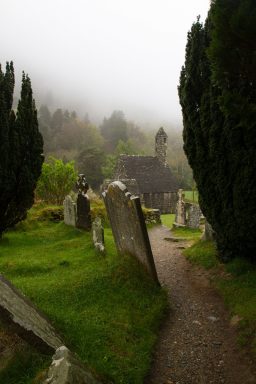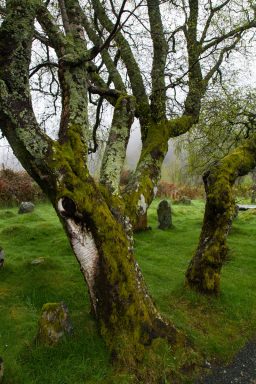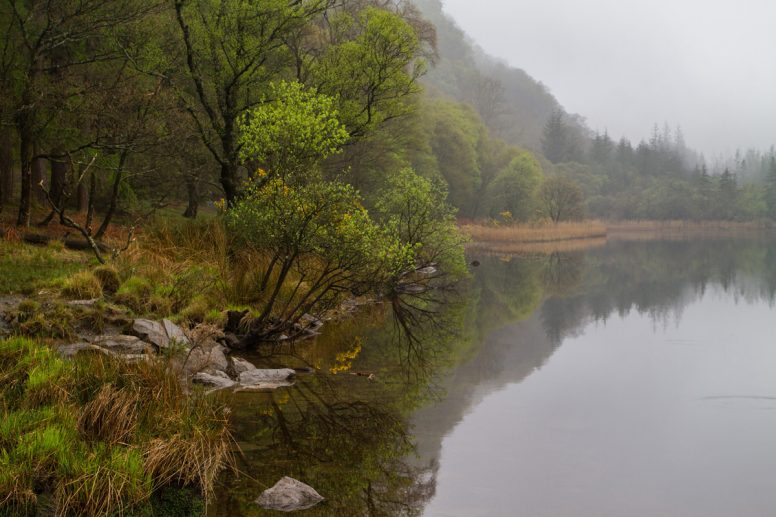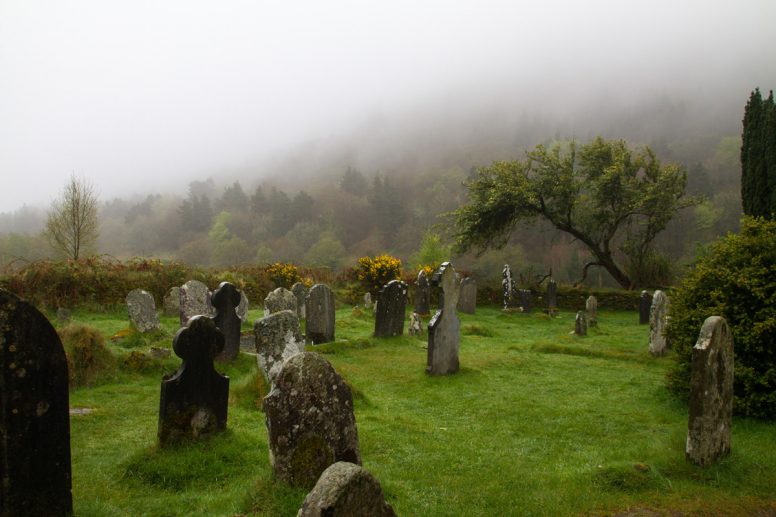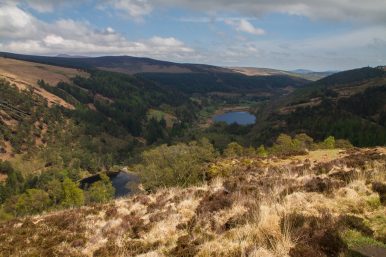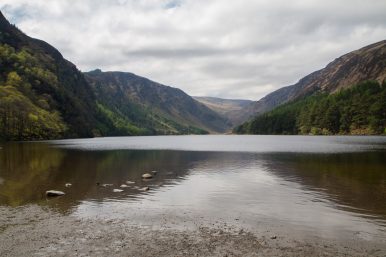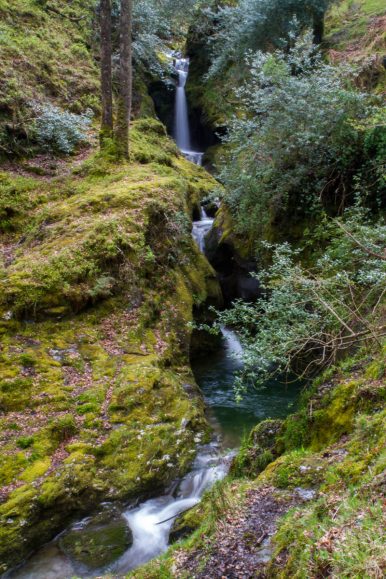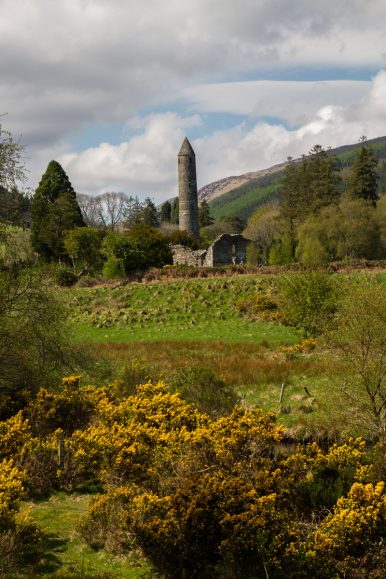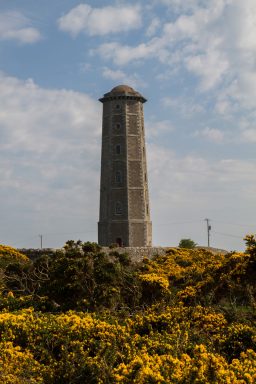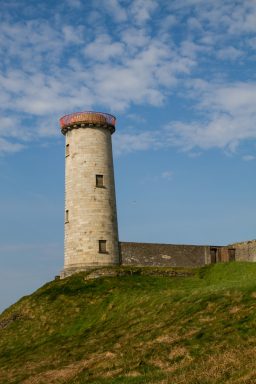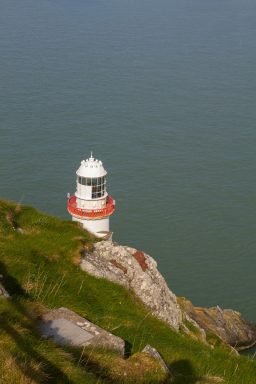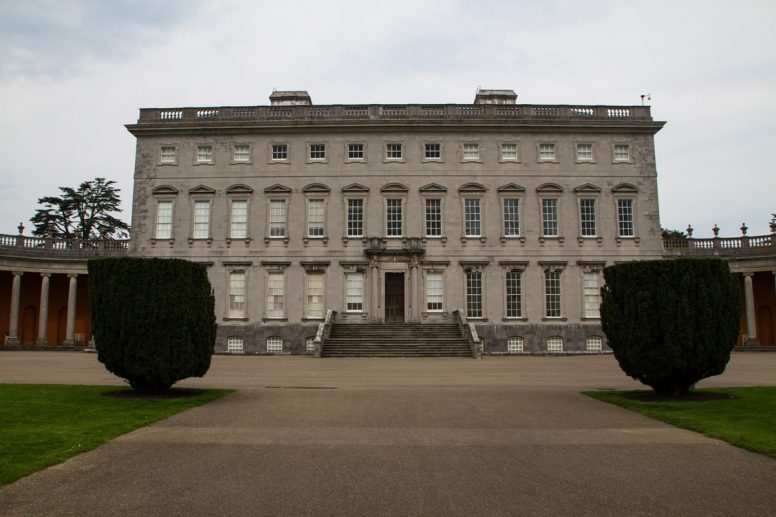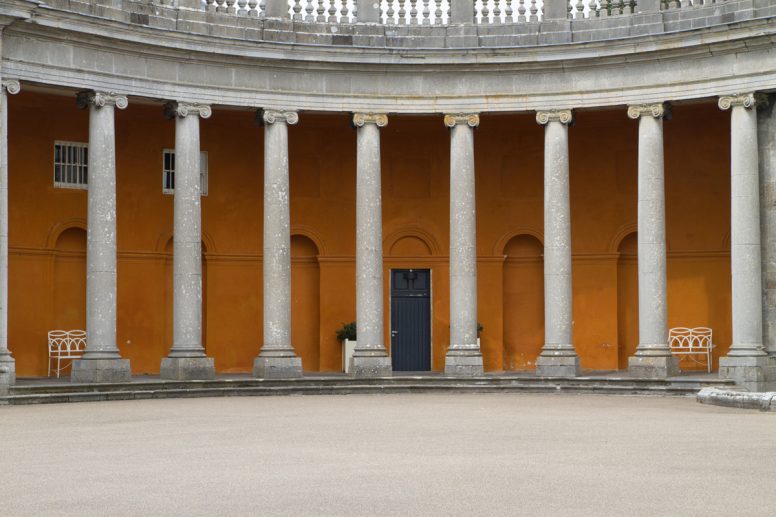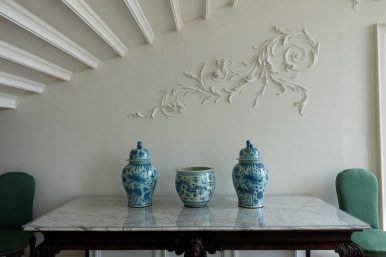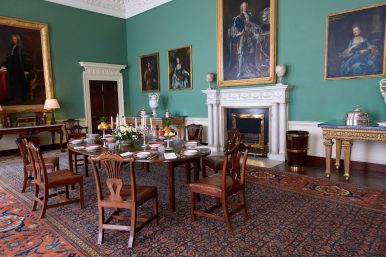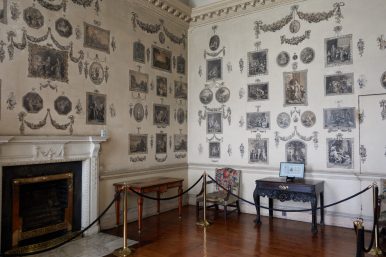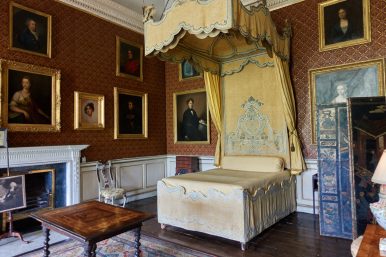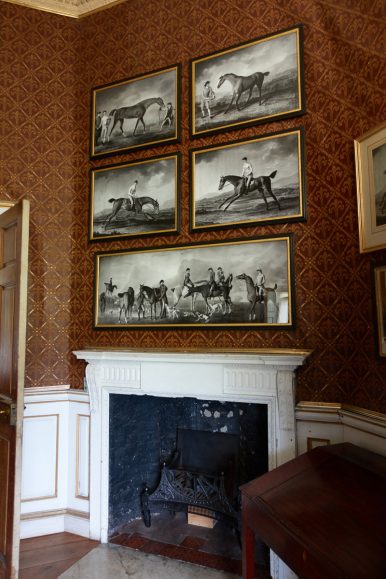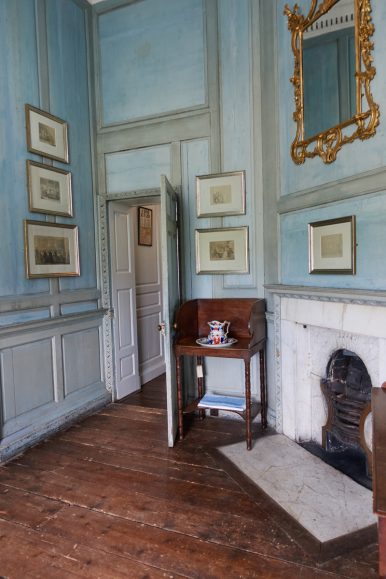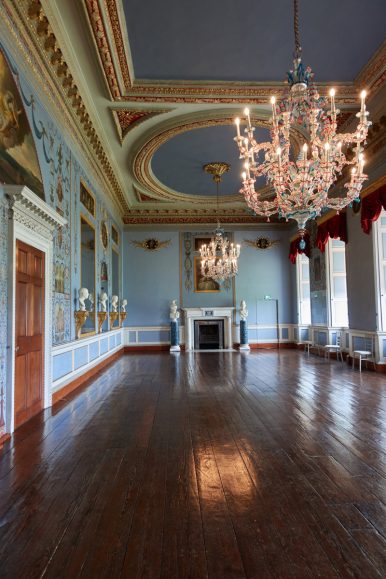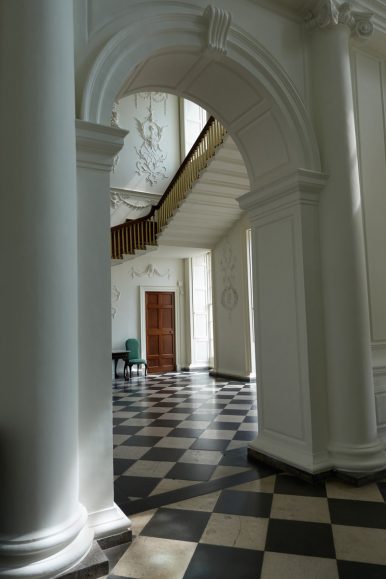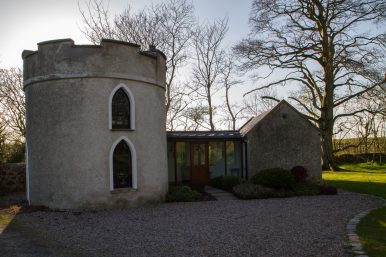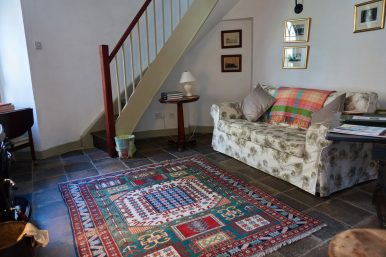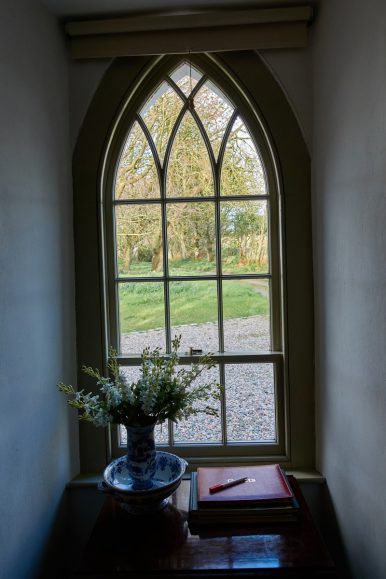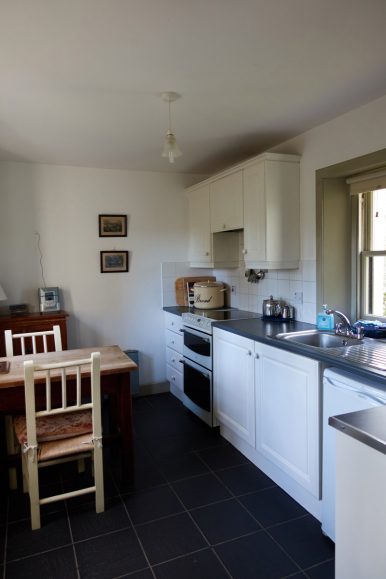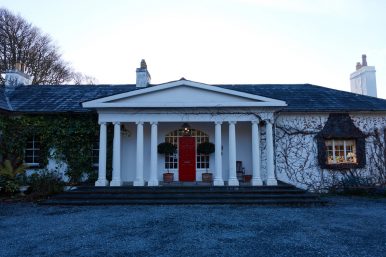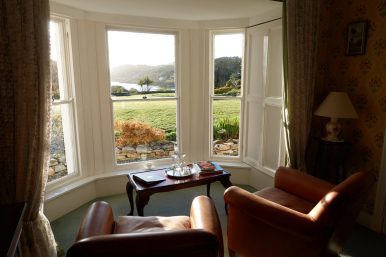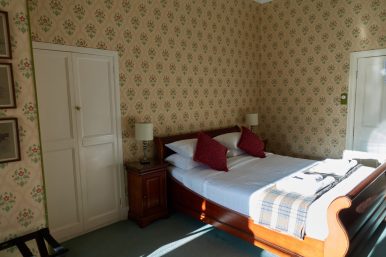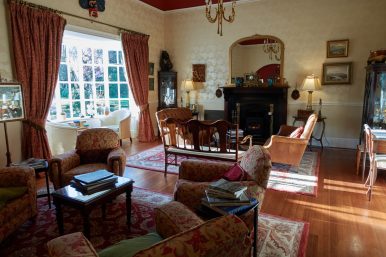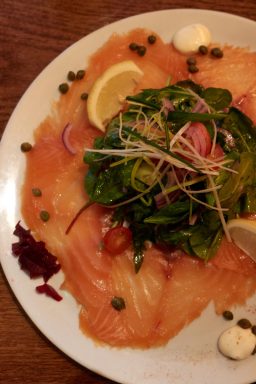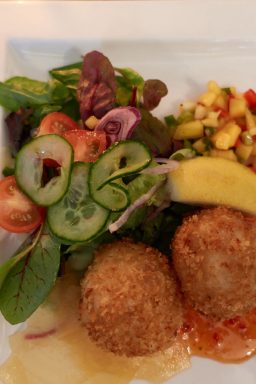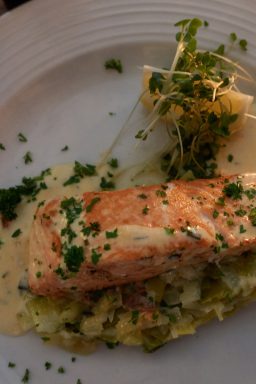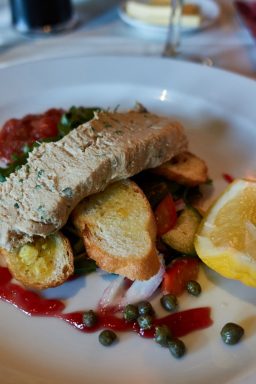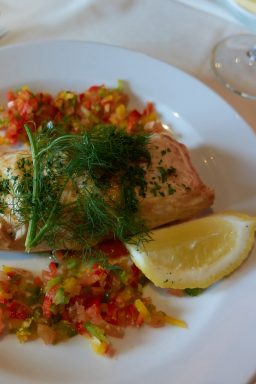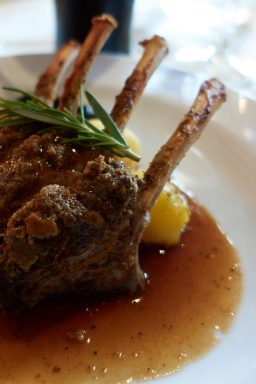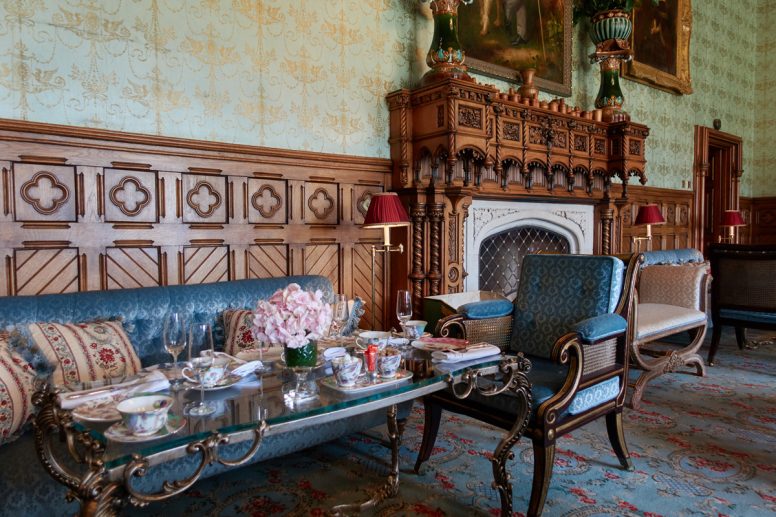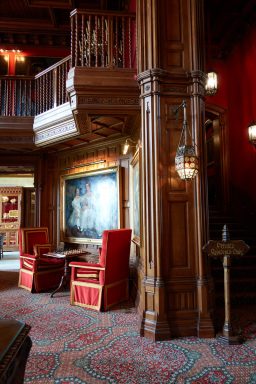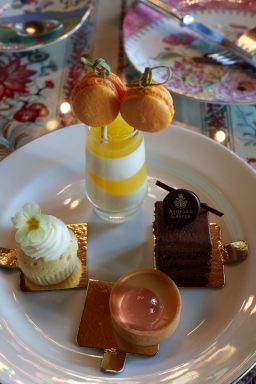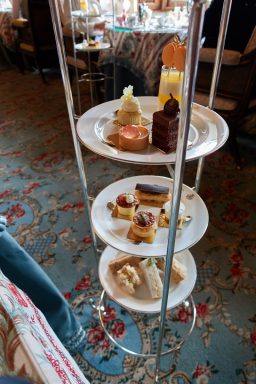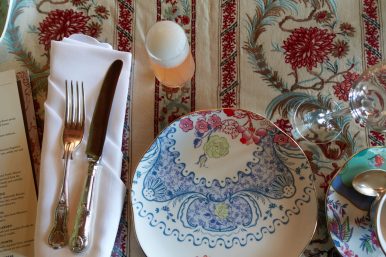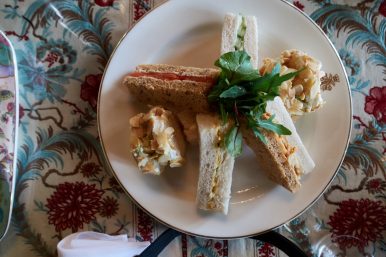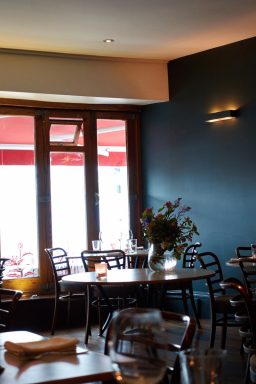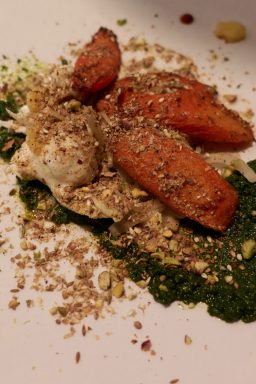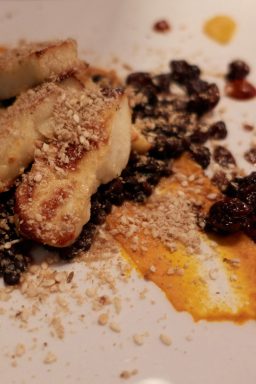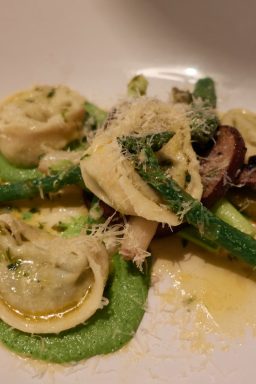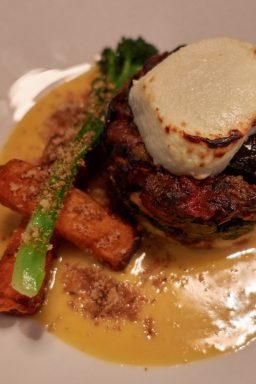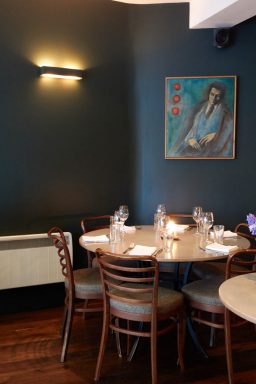This spring, I finally fulfilled my dream of traveling to the Emerald Isle, where we spent two wonderful weeks exploring as much as possible. Ireland: what to see, where to go? Our list got longer and longer the more we immersed ourselves in guidebooks. We flew to Dublin, from there drove to Northern Ireland and proceeded to drive counterclockwise around the island. I had selected a few must sees which included castles/ruins, cliffs and lakes and decided to let the weather and spontaneous things along the road be our guide for everything else. Our first must-see stop was about an hour north of Dublin, the World Heritage Site Brú na Bóinne, a Neolithic mounds site.
I didn’t expect much as I couldn’t really imagine what these mounds looked like and I was fascinated. It is assumed that these were built over generations and it was quite a feat to roll up these massive stones to their current site. We spent much more time there than anticipated, but it was worth every moment. Being able to stand inside the mound, look at the stone carvings and stare up at the layered roof was amazing. It was also a sunny but windy day and we had our first view of the green Irish countryside.
From Brú na Bóinne, various other important site are visible, one of them being the Hill of Slane, another historic site. Since we were driving by, we decided to stop and have a look. There are the ruins of an old abbey and a church along with a cemetery.
One thing I will never forget on that drive up to Bushmills in Northern Ireland was a radio broadcast. We were driving though the countryside, quite possibly crossing the border, listening to classical music on RTE when suddenly the program was interrupted by a special broadcast commemorating the Easter Rising. It was exactly 100 years ago to the minute that the first radio broadcast broadcast in the world went out. “Irish Republic declared in Dublin today. Irish troops have captured city and are in full possession. Enemy cannot move in city. The whole country rising.” A very moving moment.
When planning our tour through Ireland, my husband had only two requests: that we visit the Giant’s Causeway and we skip all cities in order to spend more time exploring. It was extremely windy when we arrived in Bushmills in Northern Ireland but we still decided to have a quick peek at the causeway in hopes of catching the light. Alas, it was too windy to even hold the camera and we had to make sure we didn’t fall off the cliff! So we decided to return early the next morning before all the tourists arrived.
I had had visions of doing some long exposure photography at the causeway, but as we had to make sure the wind wouldn’t blow us into the ocean, there as no chance we could hold onto a tripod at the same time. Instead, we walked along the trails and admired the views. What impressed me most was the perfect shape of the stones. I had never really imagined they would look like that!
But there is so much more to see along the coast. It’s not only about the causeway. First we ventured west to Dunluce Castle, which is supposedly haunted. I like a good ghost story, but it was sunny that day and any screams that may have been heard were drowned out by the wind.
We ventured further to Downhill Demesne. Most will recognize the Mussenden Temple, which has appeared in several movies. It was at once the Earl’s library and before the coast started crumbling, it was possible to ride around it with a carriage. The views are still breathtaking.
Before traveling to Ireland, I no clue what The Game of Thrones was, i.e. I knew it was one of the many television series out there and that was about it. I still have no clue what it’s about it, but I do know large parts of it were filmed in Northern Ireland and it seemed locations were all over the place. I wanted to visit the Dark Hedges when I saw a photo and that was way before I found out it was a location where a scene was filmed.
The next day we took the coastal road east all the way to Glenariff Forest Park. We couldn’t get over how green it was and how cute all the sheep and lambs were. Along the way we stopped at Torr Head, the closest point to Scotland (Mull of Kintyre) with only 12 miles between the two coasts. Torr Head boasts an abandoned 19th century coastguard signal station which was built over the remains of a 2,000 year-old ring fort and fantastic views.
Ireland has very few trees and it was nice to be able to walk through a forest and past waterfalls. Unfortunately due to a sickness, many trees are being felled in order to prevent it from spreading.
On our way back, we spontaneously decided to walk down, and up, to the ruins of Kinbane Castle along the road. The sign mentioned the Irish dropping heavy stones on Sassanachs in boats trying to come ashore. I had to smile a little to myself at the word “Sassanach”, having read all the “Outlander” books and watching the series…
After our stay in Northern Ireland, we left in the early morning in a snow storm and made our way over to the northwestern, and probably the most wild part of Ireland. We had every intention of catching the ferry to Tory Island for the day, but we somehow managed to miss the ferry and ended up spending the day at Glenveagh National Park instead. It turned out to be a happy accident as the lake and the castle ground were beautiful and we enjoyed our outing there.
Of course we like to drive the back roads and on our way from Glenveagh to the coast we stopped often to get out and take pictures.
While flipping though the postcards at Glenveagh Castle, my husband saw a postcard with a picture of Crohy Head and said he wanted to go there. We checked the map and saw it was near Dungloe, were we would be spending the night. Before we headed for dinner, we drove to the spot we suspected it would be and took some photos. The rocks aren’t visible from the road unless you get out of the car and stand on your tip-toes. From there it was a short walk down a dirt road and a climb over a crumbly wall.
It was from Dungloe to Killarney that we followed the Wild Atlantic Way. We took every side road time would allow us. Our first stop was the Slieve League Cliffs which are among the highest (598m) in Europe and twice as high as the famous Cliffs of Moher. The area is rugged and although we never actually saw one, I’m sure those fluttering specs along the cliffs were puffins.
From there we made our way south past the iconic Benbulben and towards Clifden, stopping at Achill Island to stretch our legs. There, we walked along the beach, laughed at sheep braying when our car came closer and smiled at lambs jumping around like they had springs in their legs.
We reached Clifden as the sun set and just before we arrived we stopped at the only fjord in Ireland, Killary Harbour.
From our base in Clifden we explored wild Connemara, a beautiful and raw place. We started our stay with a decadent day. First we visited Kylemore Abbey, where we wandered around the house and grounds. We were amazed with the old greenhouses which at one point even grew bananas and melons.
Afterwards we made our way to Ashford Castle. Staying at the castle was a little out of our league, but we decided to treat ourselves to Afternoon Tea and then fly the hawks at Ireland’s School of Falconry on the castle grounds. Flying the hawks had been on my wish list for a long time and I was surprised at how light the birds actually were. I had a huge bird on my arm, but it was a lot lighter than I thought. We let them fly and had them come back to us with the promise of a chicken leg or some other piece of raw meat. The castle interior is sunning and after our hawk walk, we walked through the grounds.
The following day was foggy and generally not too friendly. We drove along the Sky Road. We weren’t blessed with views, but did enjoy some of the foggy scenes. Clifden Castle was hidden somewhere in the fog and in a way, I’m glad we saw it in the fog as it gave it a mystic feel.
After 24 hours of fog, the sun shone brightly and we made our way up Diamond Mountain for 360° views of Connemara. It was so windy I thought it would blow us off the top of the mountain, but it was worth it. Especially when a rainbow made an appearance. Afterwards we attempted to walk along the fjord, but the wind started to annoy us and about half an hour in we turned back. Instead, we decided to check out the Doolough (Black Lake) valley. Up at the pass, there is a monument for some 400 people who died there during the famine trying to cross the pass.
Our dive back was a mixture of rain and sun. The nice thing about the rain in Ireland is that it hardly ever rains for longer than 5 minutes. The wind just blows it on. Sometimes we just sat and waited for the rain to pass before taking a photo. Here, I saw the most spectacular rainbow but failed to capture it. There aren’t too many spots where it’s possible to pull out on the road and sometimes you just have to take what you get.
Again, we headed further south along the Wild Atlantic Way. Through the Burren National Park, a large area covered with limestone. It’s easy to miss the little flowers and plants in the sharp cracks, but once you see one, you start to see the rest. The Burren Perfumery, where we briefly stopped at and ended up buying several things, uses the plants in the area to make lovely smelling perfumes and cosmetics.
We even stopped to visit Ailwee Cave. It was very touristy and our tour group was on the loud side. The cave was interesting, but what I’d consider a “standard” cave. Nothing special.
Finally, we made it to Ireland’s most iconic site: the Cliffs of Moher. I was a little disappointed but really only because I knew this was my last chance to see puffins and I didn’t. A sighting on the Skelligs was out of question because they don’t open to tourism until mid May. We walked down along the coast, past where most of the tourists were, to admire the view. The shear cliffs, and not necessarily the height are the highlight here. I think the next time I’d like to go out on the boat and see them from the water.
Our day on the Dingle Peninsula was one of the very few days that was dreary and cold. It was impossible to see very far as the fog was thick. For a while I spoke a running commentary as to what we would be seeing, but when that stopped being funny, I quit. We made it about half way around and decided it was time to go back to Killarney. We would return the next time we visit Ireland. We did make time to see two early Christian sites, though before leaving. The Gallarus Oratory, over 1000 years old and the 12th century Kilmalkedar Church. It was pouring rain when we were at the Oratory, but standing in the small building, we stayed completely dry. Imagine that!
After the rain came the sun and we used every minute to climb Purple Mountain (832 m), then back down through the Gap of Dunloe. To finish off the day, we went on a sunset kayaking tour on the Killarney Lakes. Hiking in Ireland is very different than hiking in Switzerland. The popular trails are prepared, but the others are a case of finding your way though the bog and then over rocks. Definitely not something you want to do in the fog. Also, in Switzerland no one would venture out in to the high mountains with heavy clouds overhead. I say high mountains as we were right across from Carrauntoohil, Ireland’s highest mountain at 1041m. But all went well. It didn’t rain and it wasn’t even windy up at the top.
Taking a jaunting car up and down the gap is a very popular thing for tourists to do and we dodged several while walking down along the road. I don’t even want to imagine what it’s like during the summer high season.
In the evening we drove to Ross Castle to meet up with Tomas, our kayaking guide for the sunset kayaking tour we had signed up for. We had perfect weather, and I could have easily spent more time out on Lough Leane. It was so peaceful! We paddled first to Innisfallen, where there are the ruins of a 6th century monastery which was also a leper hospital and monastic university and now is home to lots of deer. They actually swim over from the mainland to breed. The monks there were constantly being attacked by outsiders and when that happened, they put their treasures in a small boat and that boat was paddled as fast as possible to a little rock out on the lake which has a little cave cave where a monk would wait until the coast was clear. We actually got to paddle through these little caves on our tour! We also saw old mines on another island, and one of the eagles now breeding on a neighboring island soared overhead. A very memorable evening indeed.
A hike up to Torc Mountain the following day let us see where we had kayaked the evening before. The view was amazing and we also enjoyed playing around with long exposure at the waterfall.
Before heading back east across the country, we managed to squeeze in a visit of Muckross House and the gardens. We were stuck in a large group during our tour of the house, but it was still worth it. Who knew Queen Victoria announced three years in advance that she’d be visiting and then stayed for only one night and brought her own bed?!
Half way to the Wicklow Mountains we walked around the Rock of Cashel in the pouring rain. The round tower dates from around 1100, and the famous Cormac’s Chapel was begun in 1127. The sandstone used in building have become waterlogged over the centuries and the frescos are now being restored.
Then another spontaneous stop to visit the Mitchelstown cave followed. The cave is still privately owned and it was actually the first cave in Ireland to open to the public for tours. The cave is beautiful inside and almost nothing has been changed to accommodate visitors. You’re actually seeing what the person who discovered it saw. The tour also turned out the be the most entertaining tour I have ever been on!
Our last full day in Ireland was spent hiking in the Wicklow Mountains. We started early in Glendalough, again in the fog, and were almost the only people there. It is known for the early medieval monastic settlement founded in the 6th century by St. Kevin. From there we hiked up and above Upper Lake for views of the valley. By the time we were back at the parking lot, we were surrounded by half of Dublin and the line of cars waiting for a spot to park was a kilometer long.
With some time to spare, we drove out to Wicklow Head, where there is a lighthouse we had hoped to stay at. But it is very popular and booked for the time we were interested in. In fact, there are three generations of lighthouses there.
We had an evening flight out of Dublin and decided to visit Castletown before leaving the country. We were extremely lucky and ended up receiving a private tour as we were the only ones there!
All in all a very memorable visit and there is still so much more to see next time!
*****
Where to stay:
Drum Gate Lodge, Bushmills
We enjoyed our stay at the Drum. It was quiet, warm and only a short distance away from all the things we wanted to see on the Causeway Coast.
Mallmore Country House, Clifden
This was easily one of the best places we stayed! The view from our room was fantastic, the hospitality top and the breakfast delicious.
Where to eat:
We rarely had anything we didn’t like, but we also had some outstanding meals.
Clifden: Guy’s Bar, Mitchell’s Restaurant, Marconi Restaurant
Afternoon Tea at Ashford Castle
Worth every single cent! Make sure to order the warm scones and treat yourself to a glass of champagne. Anything you can’t eat will be packed up for you to enjoy later.
Café Paradiso, Cork
Denis Cotter runs this outstanding vegetarian restaurant. It’s small and very popular and for a good reason. Each dish is packed with flavor and textures which will leave you walking out the door fully satisfied. It was highly recommended by my sister who visited a few years back and now I can only pass on that recommendation.
Byrne and Woods, Roundwood (Wicklow Mountains)
